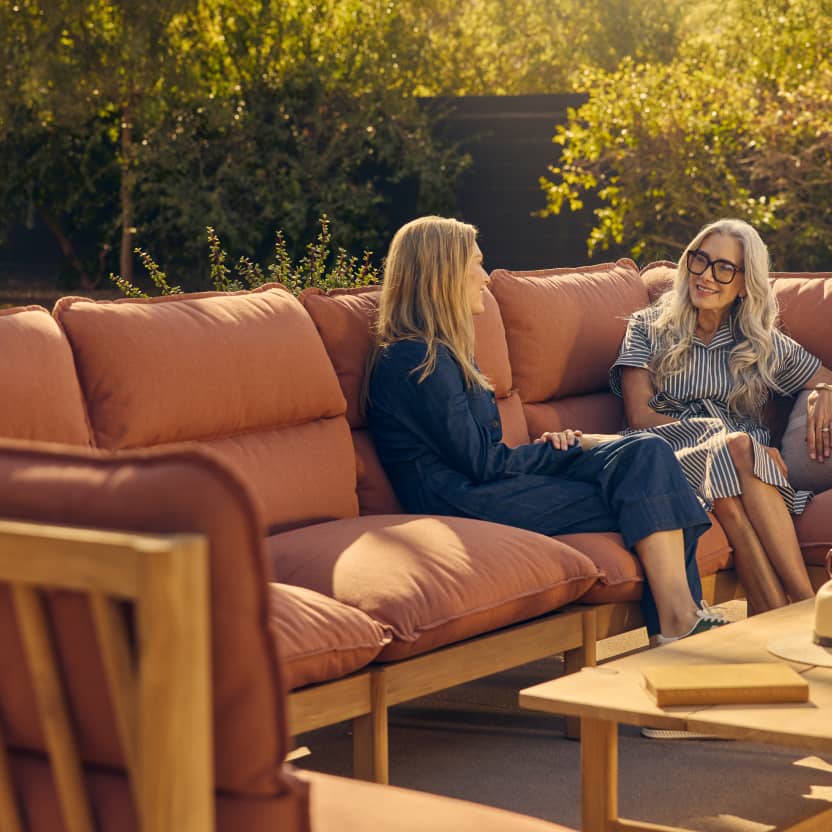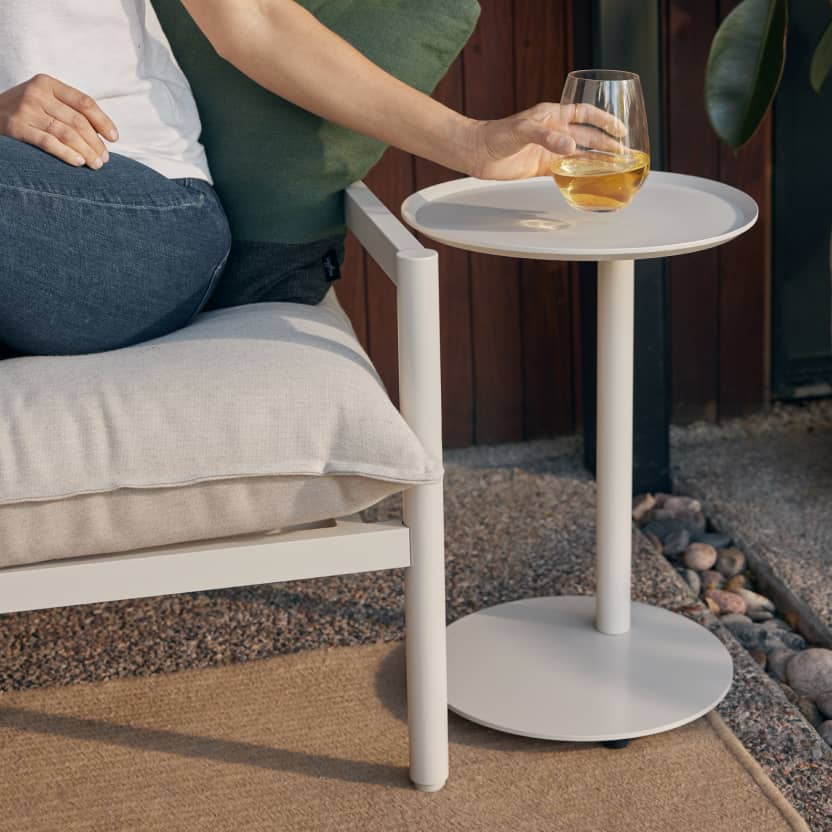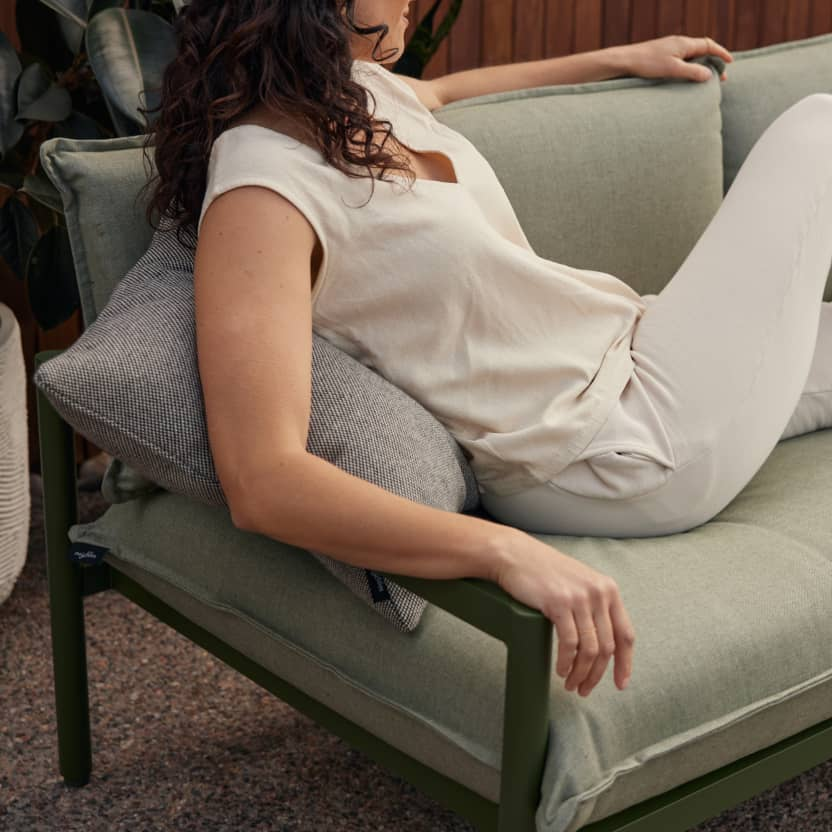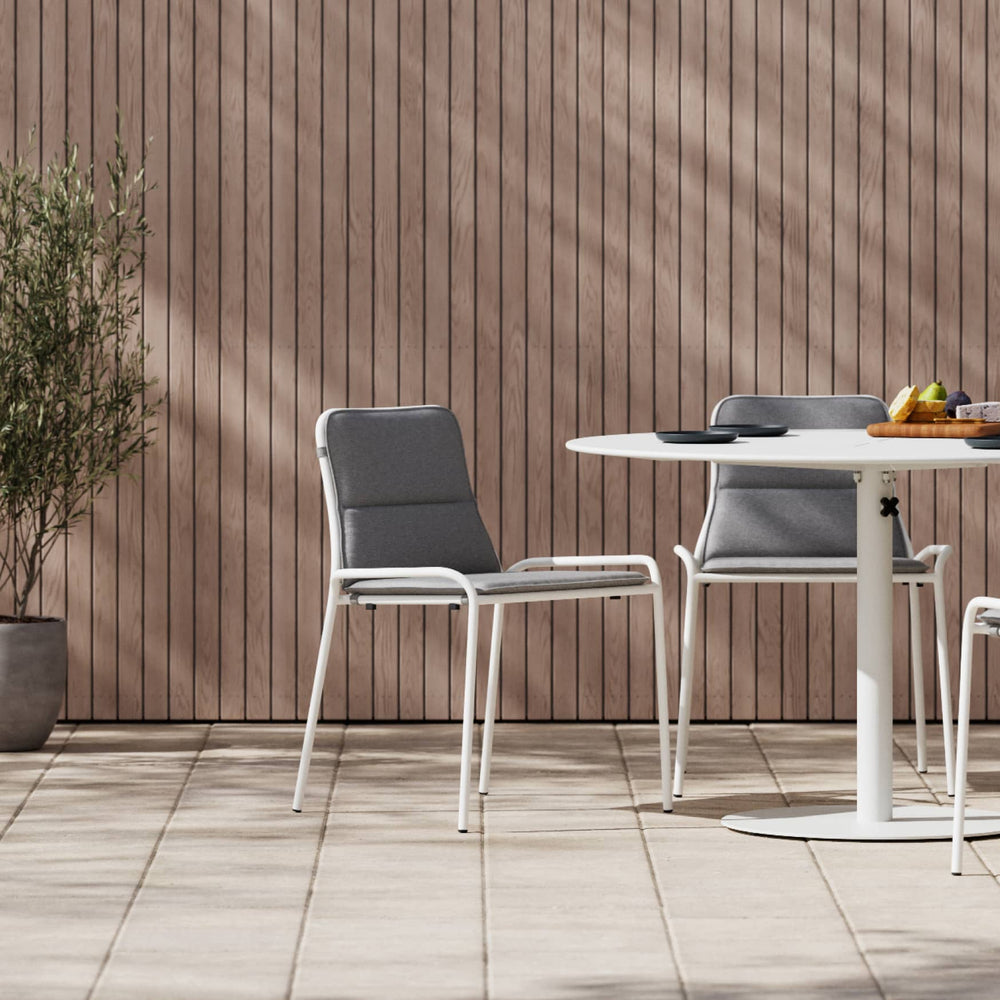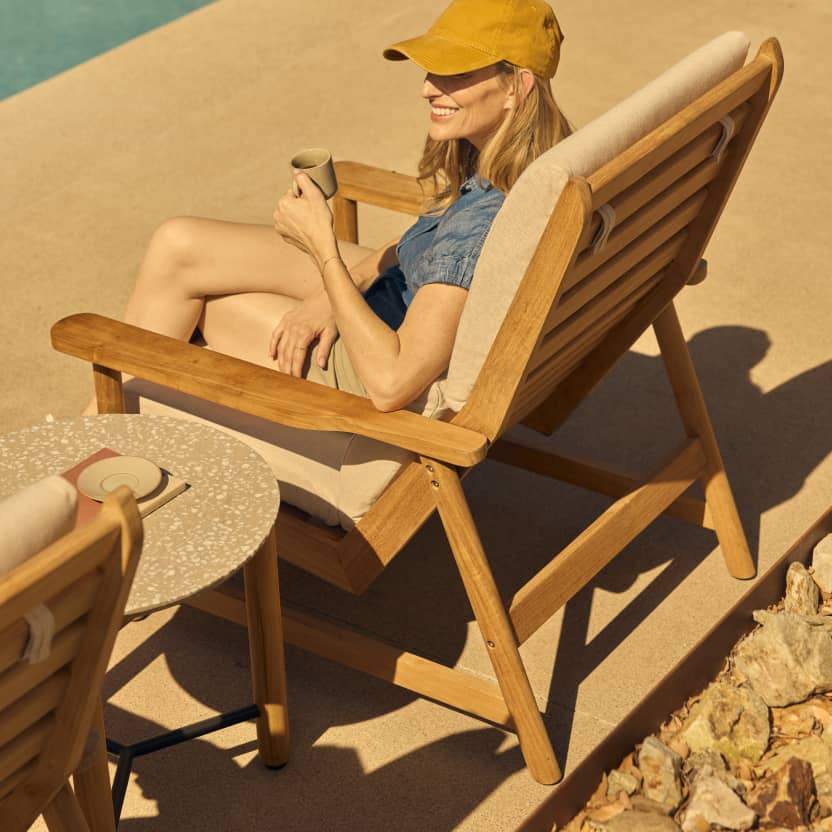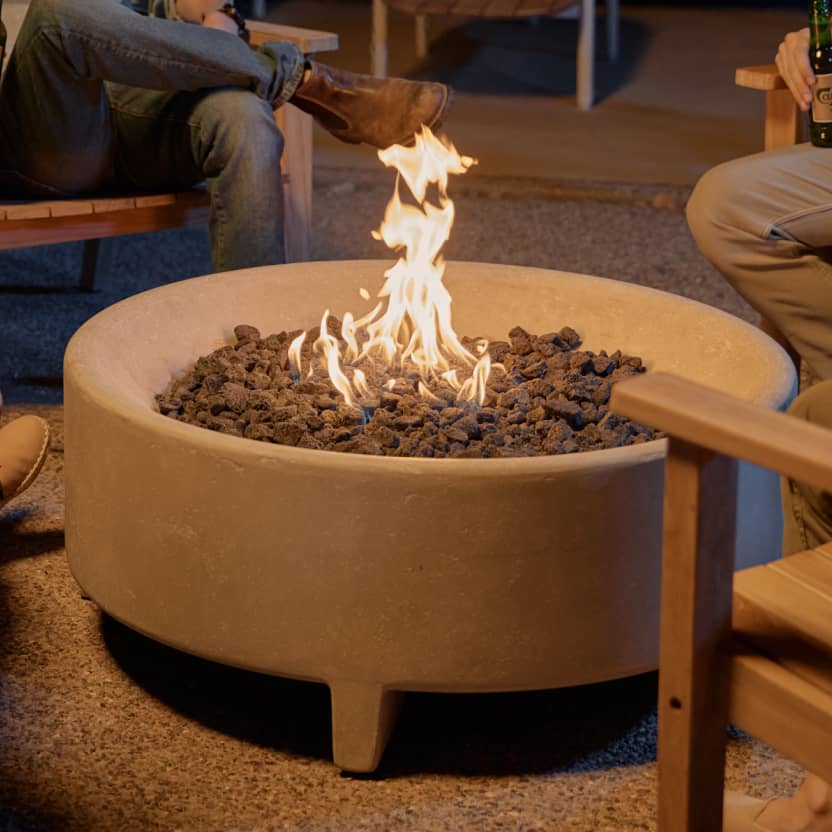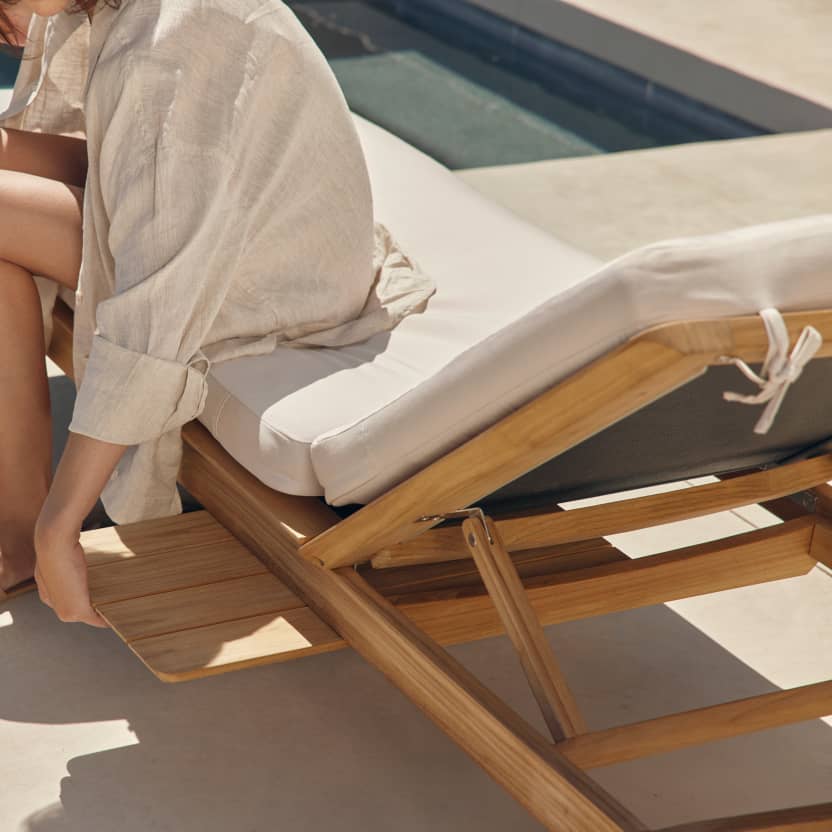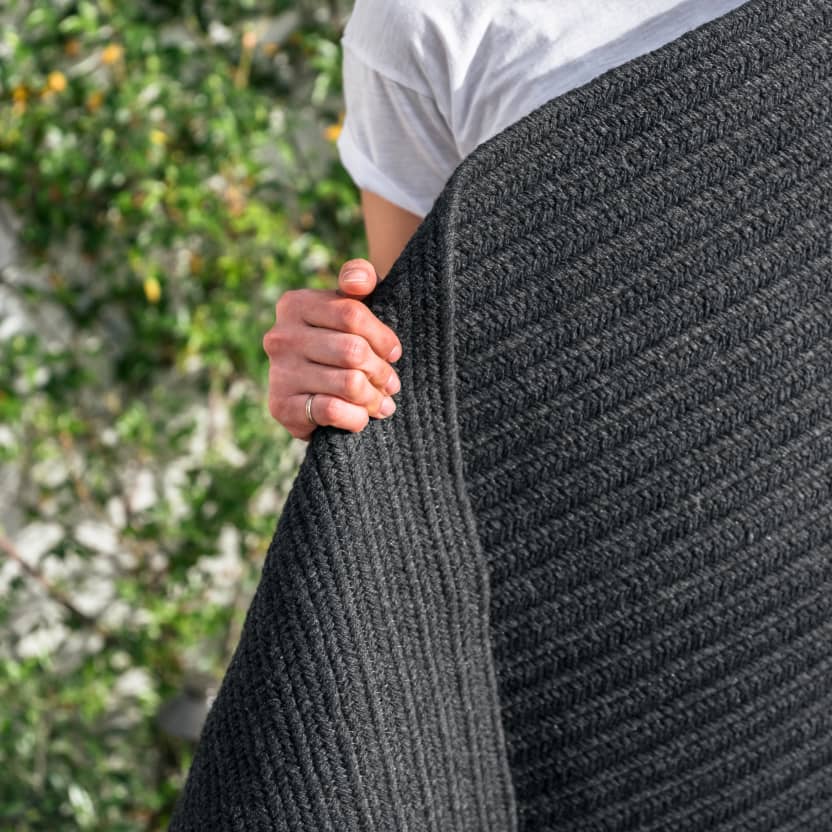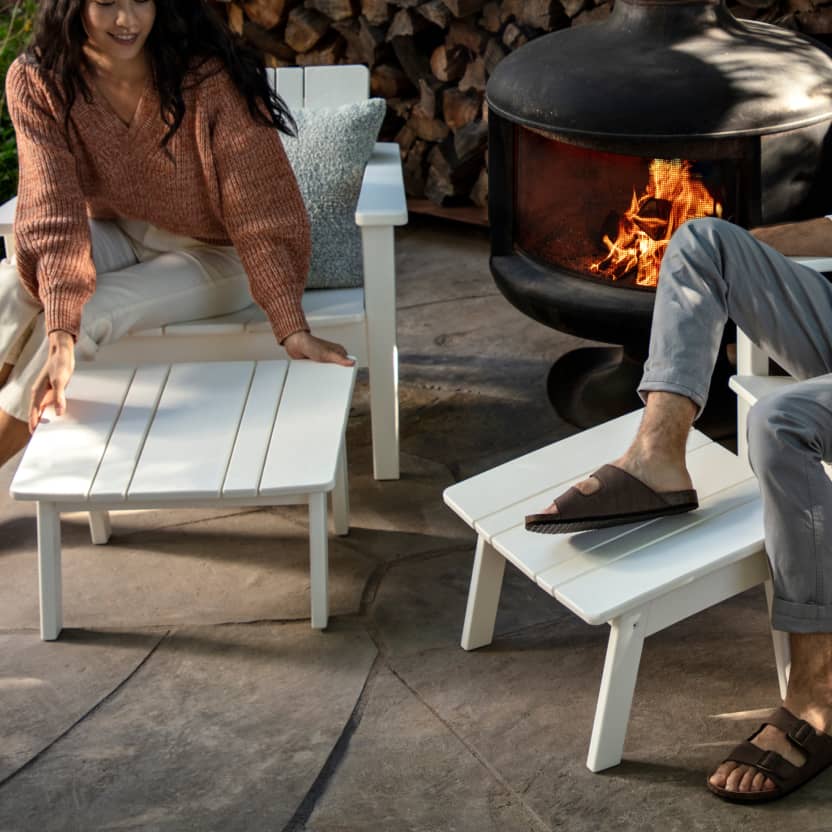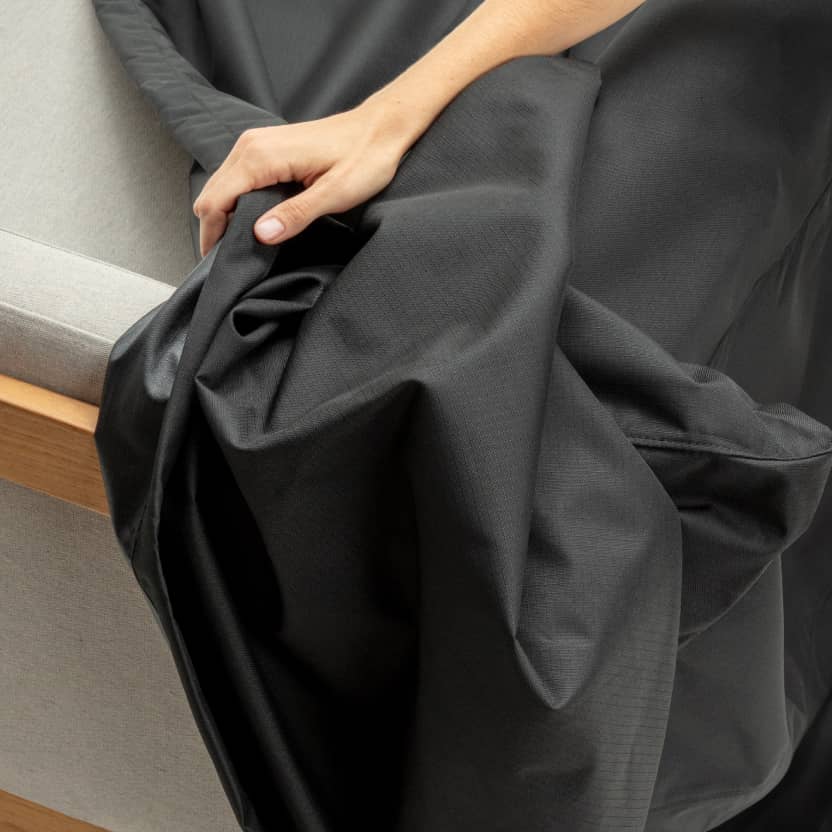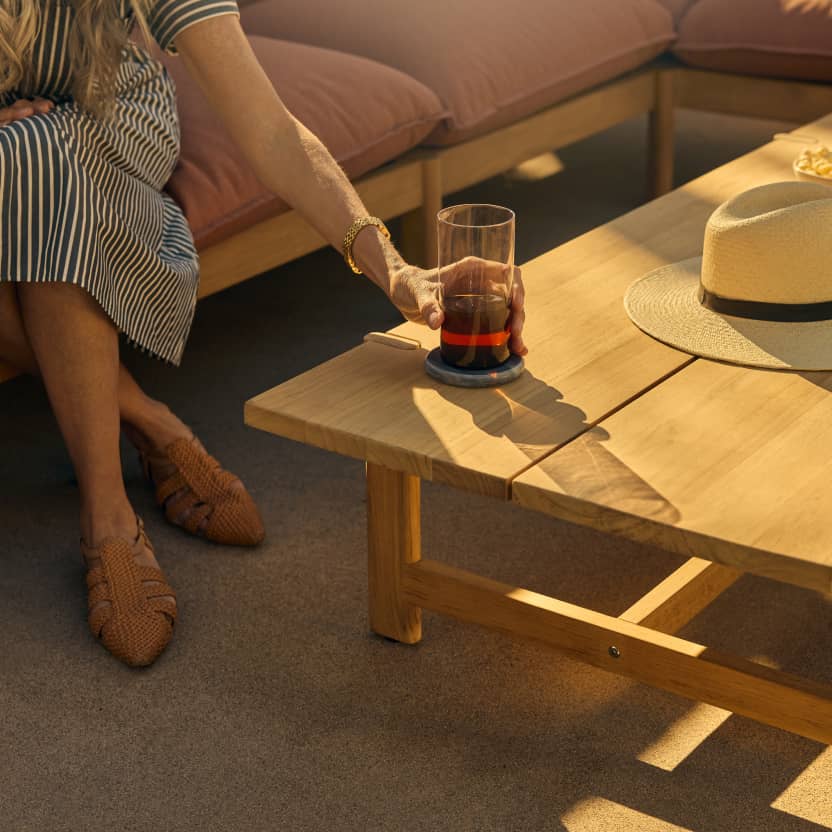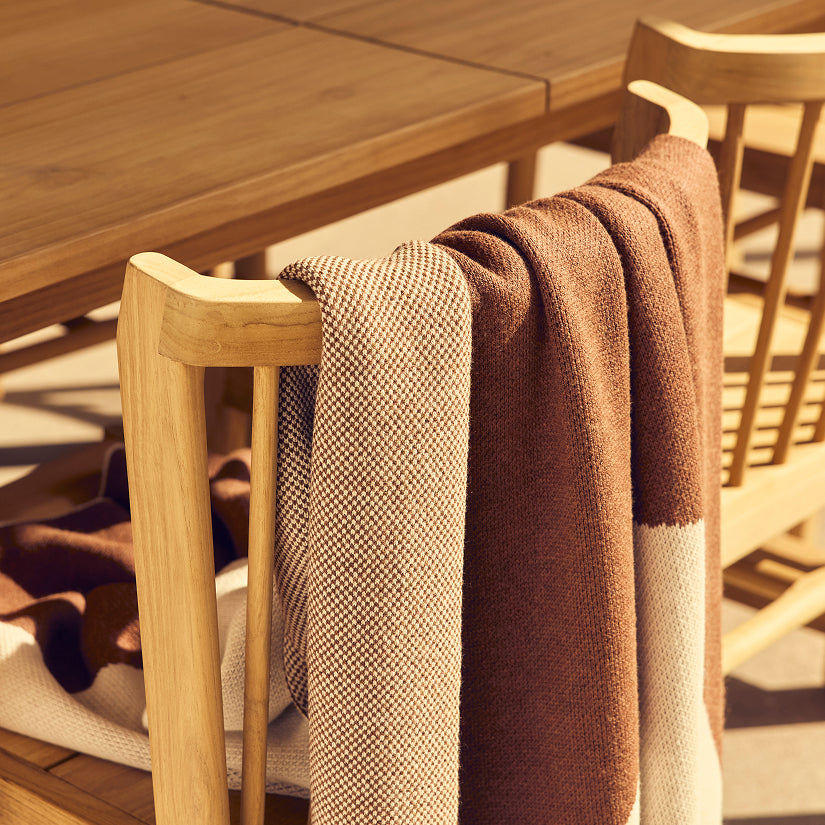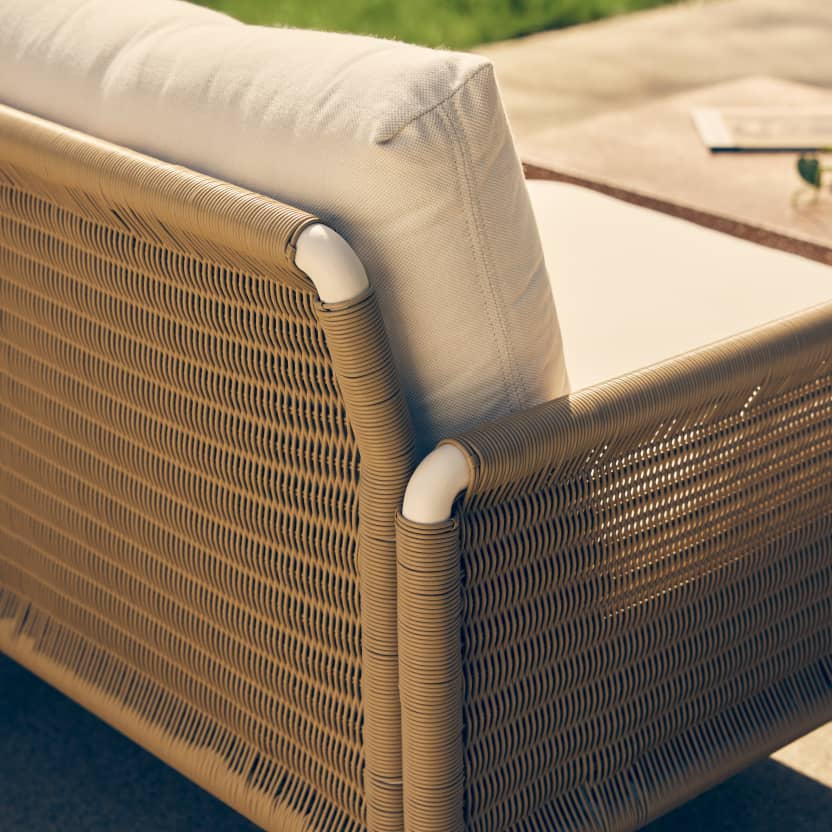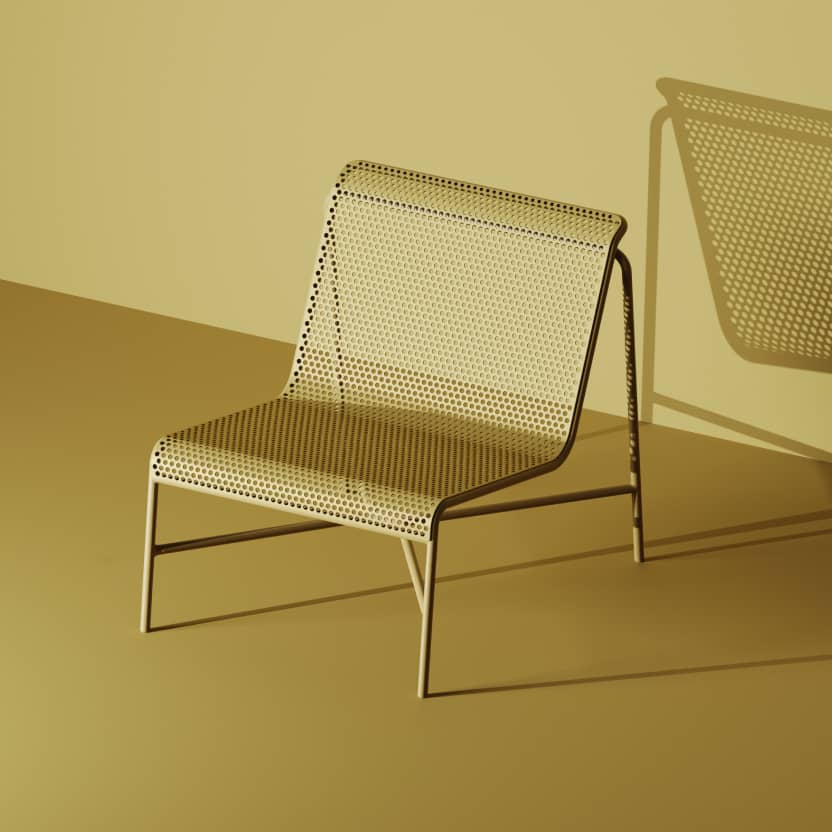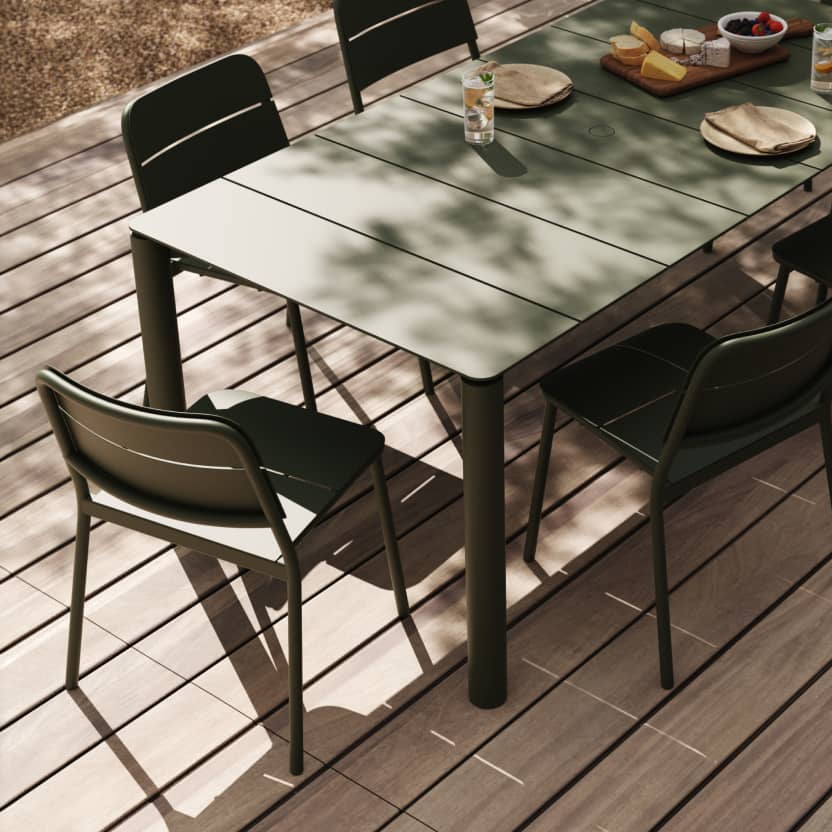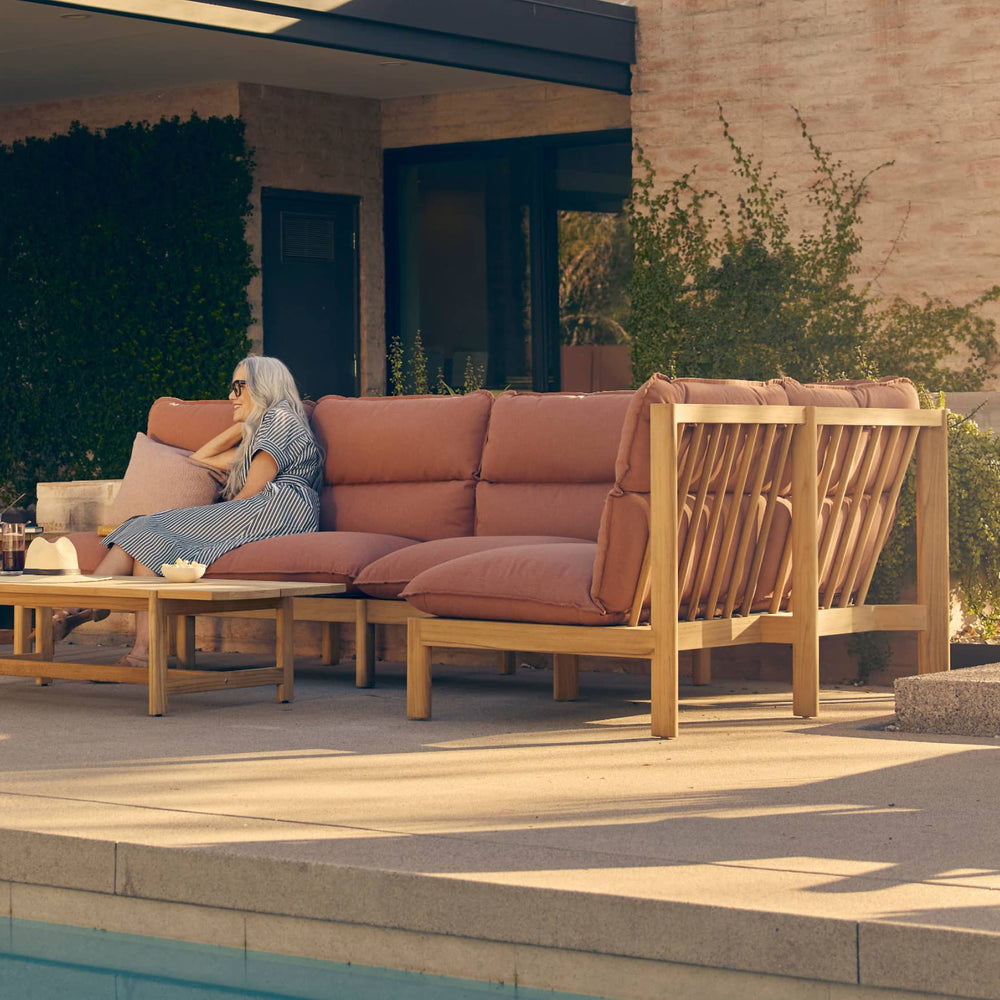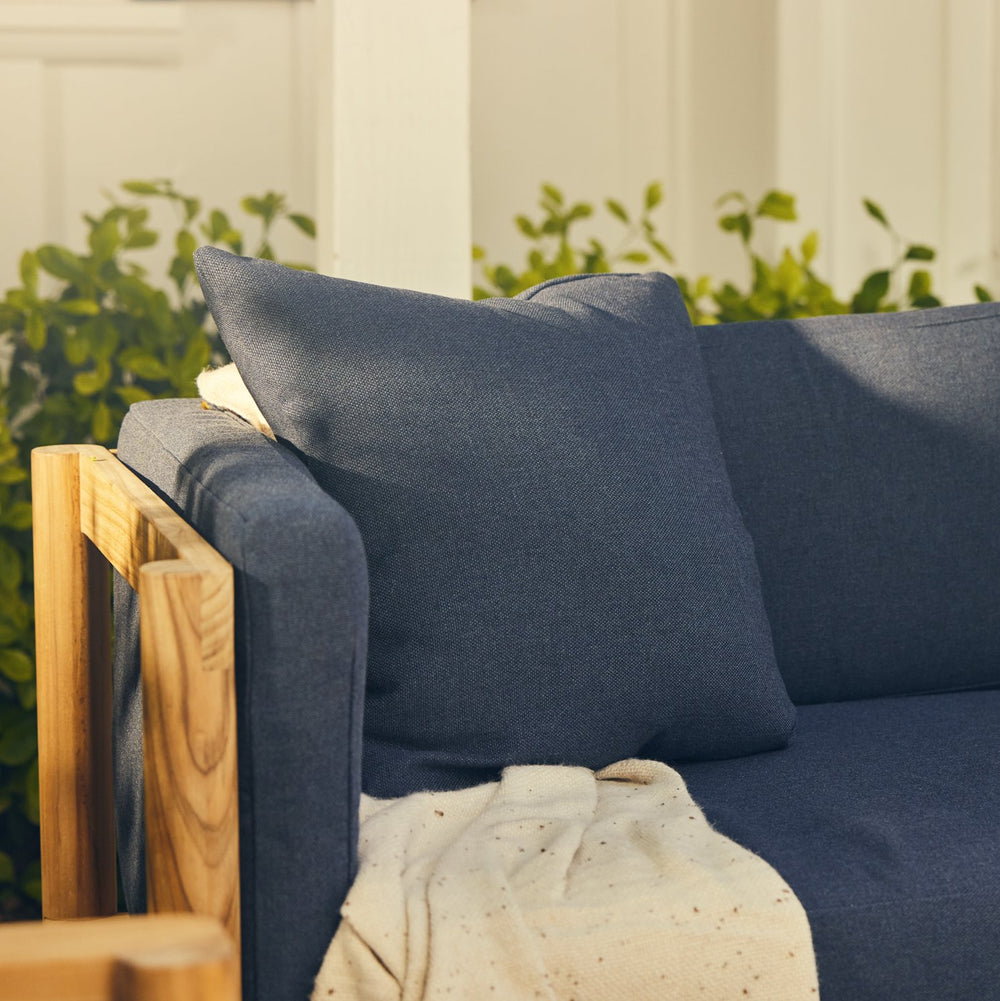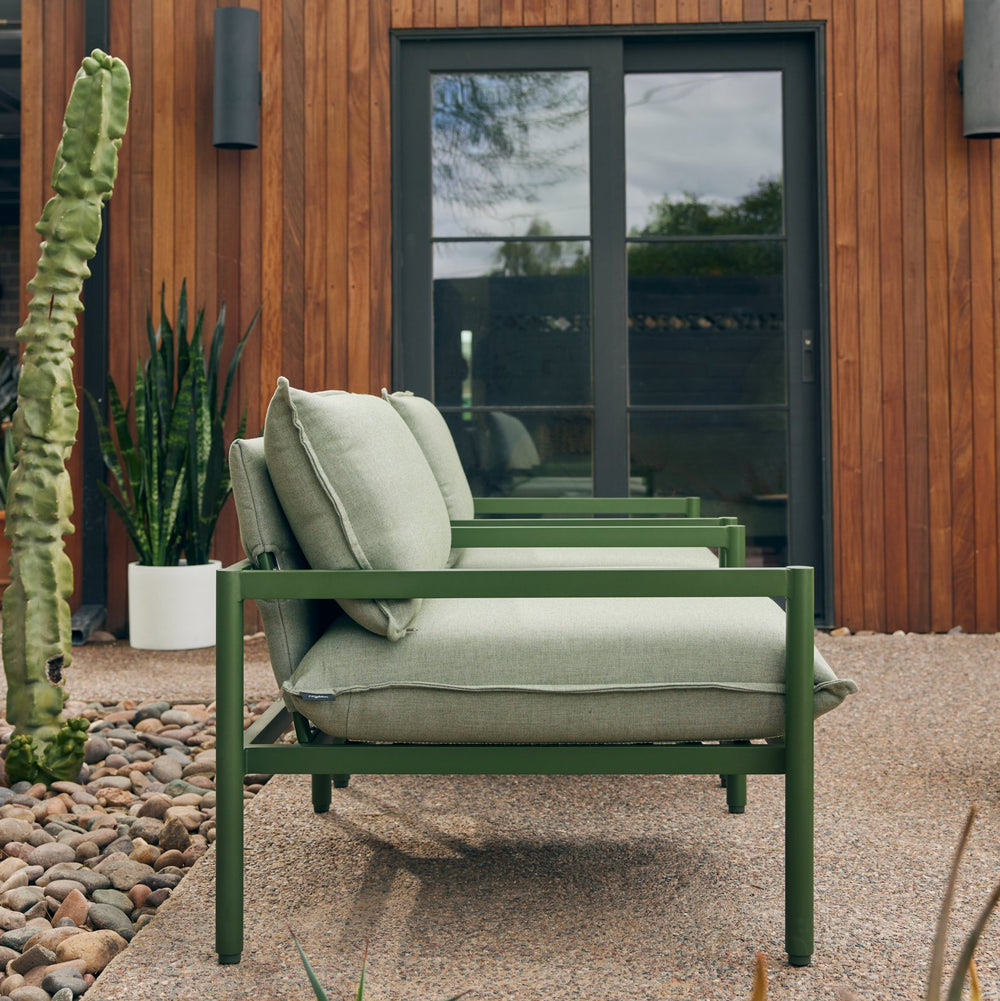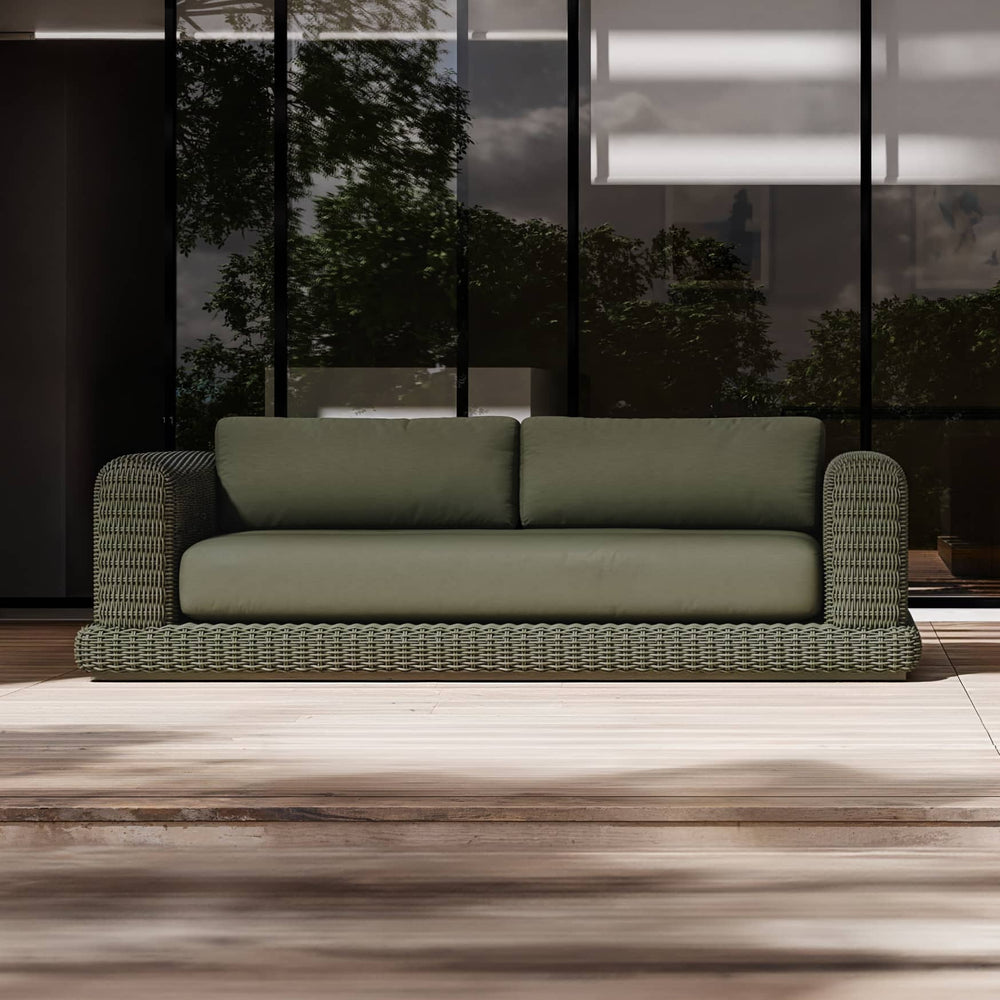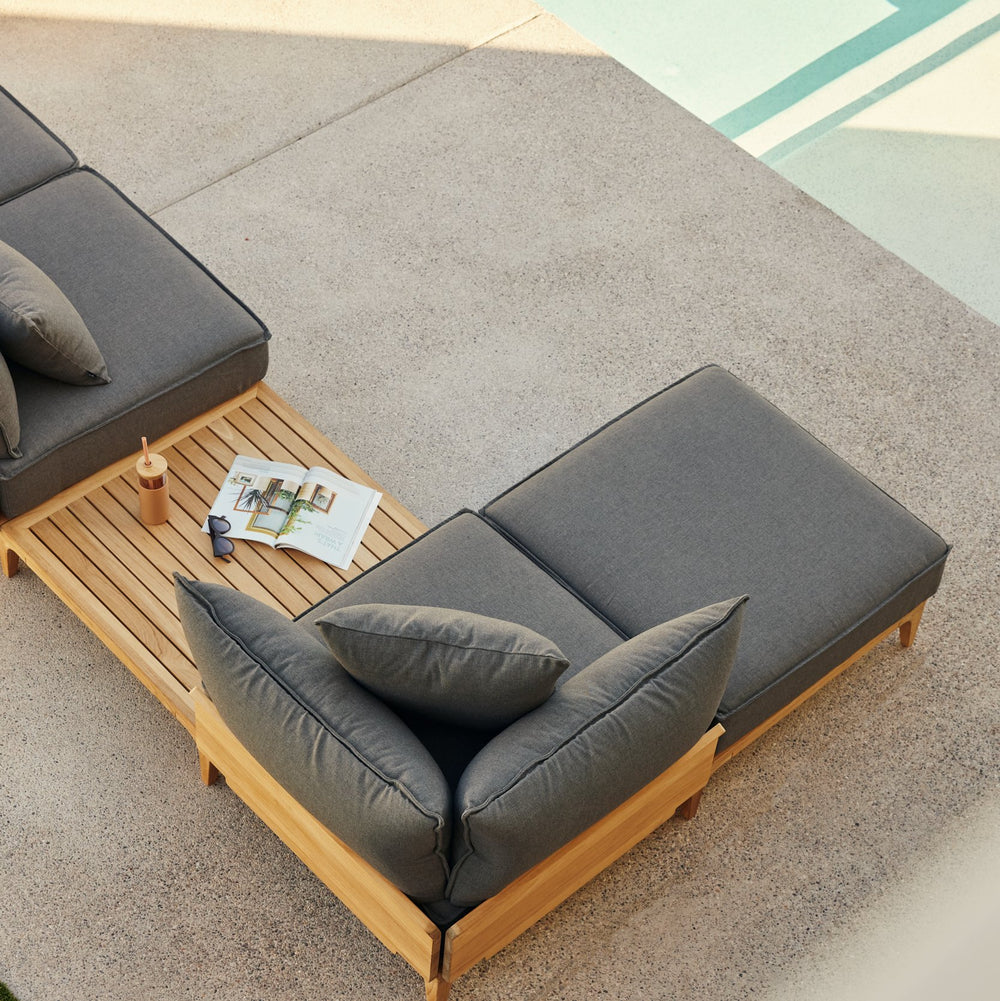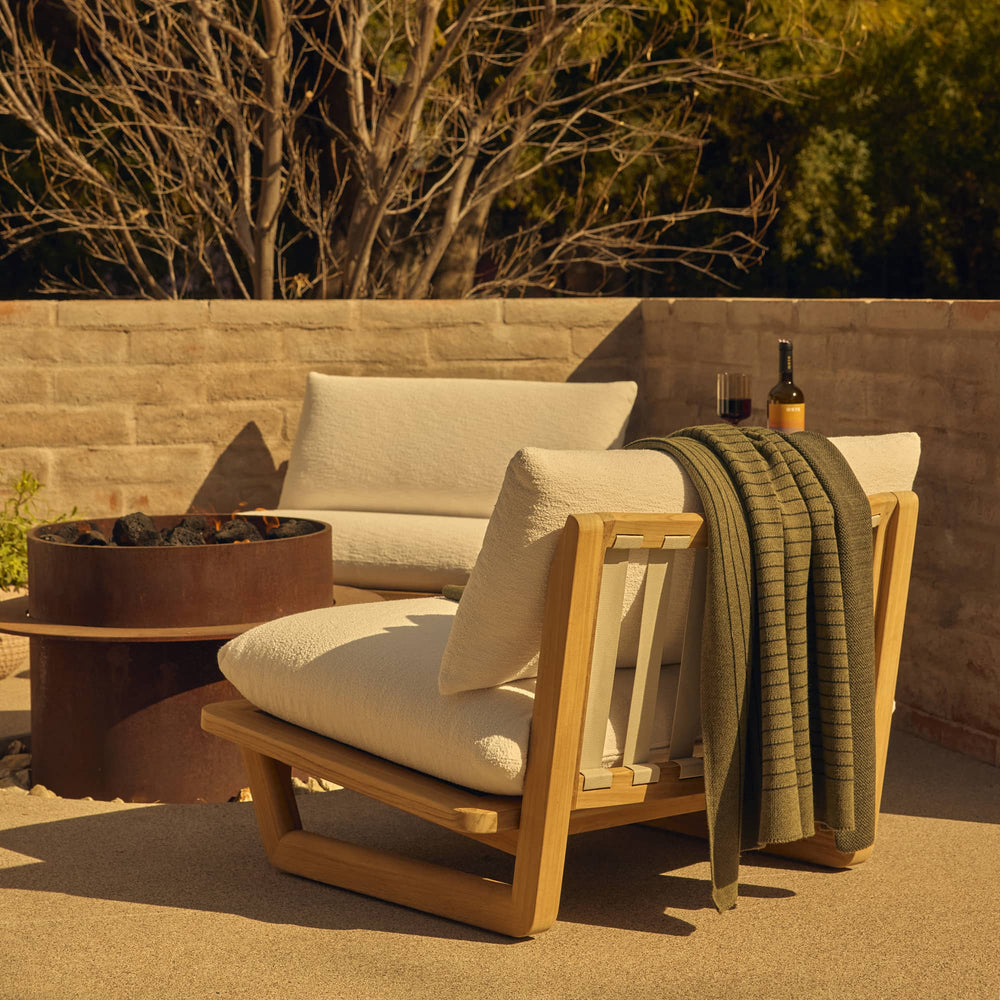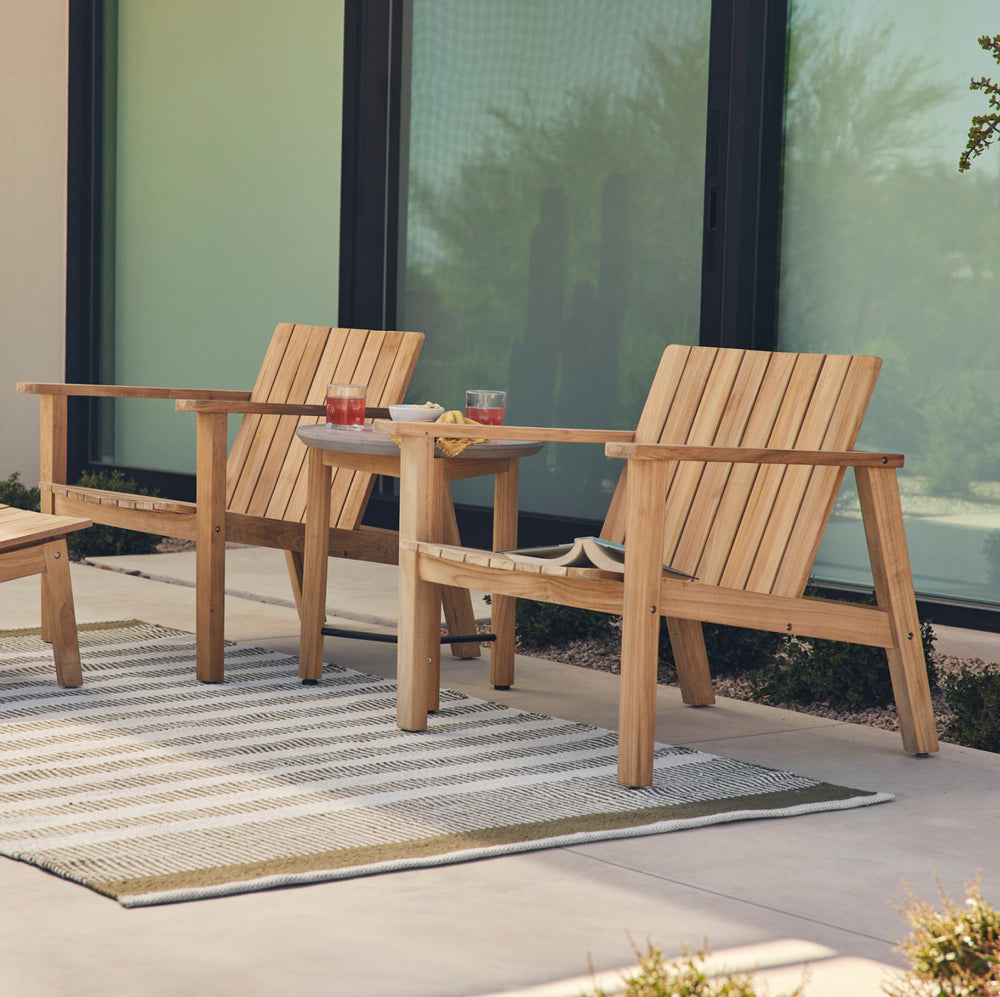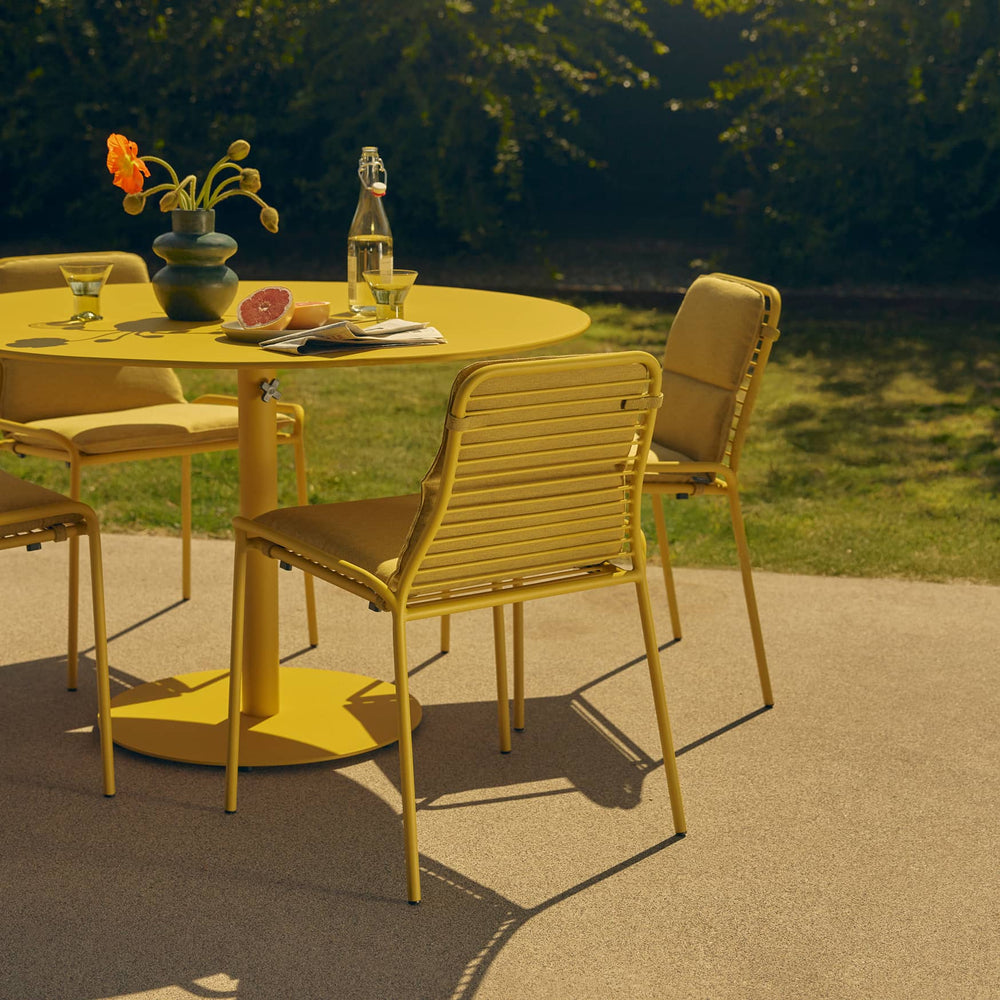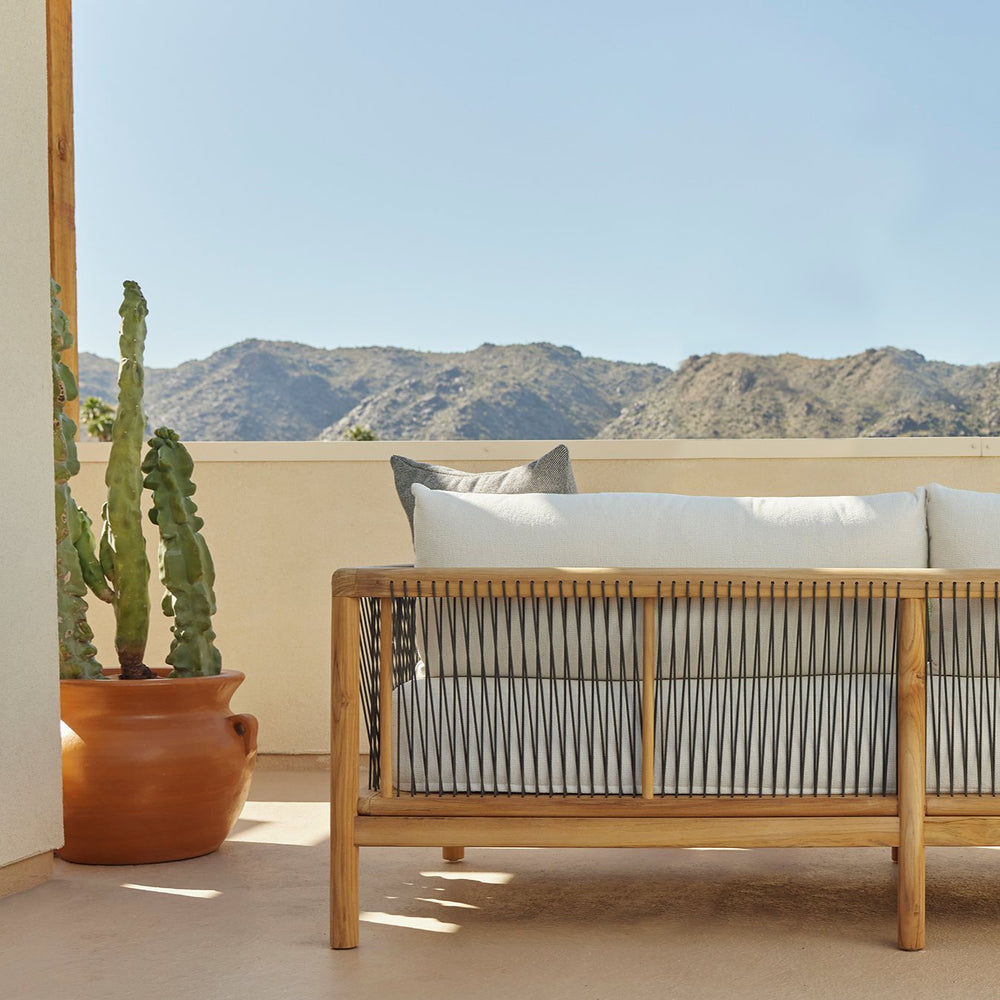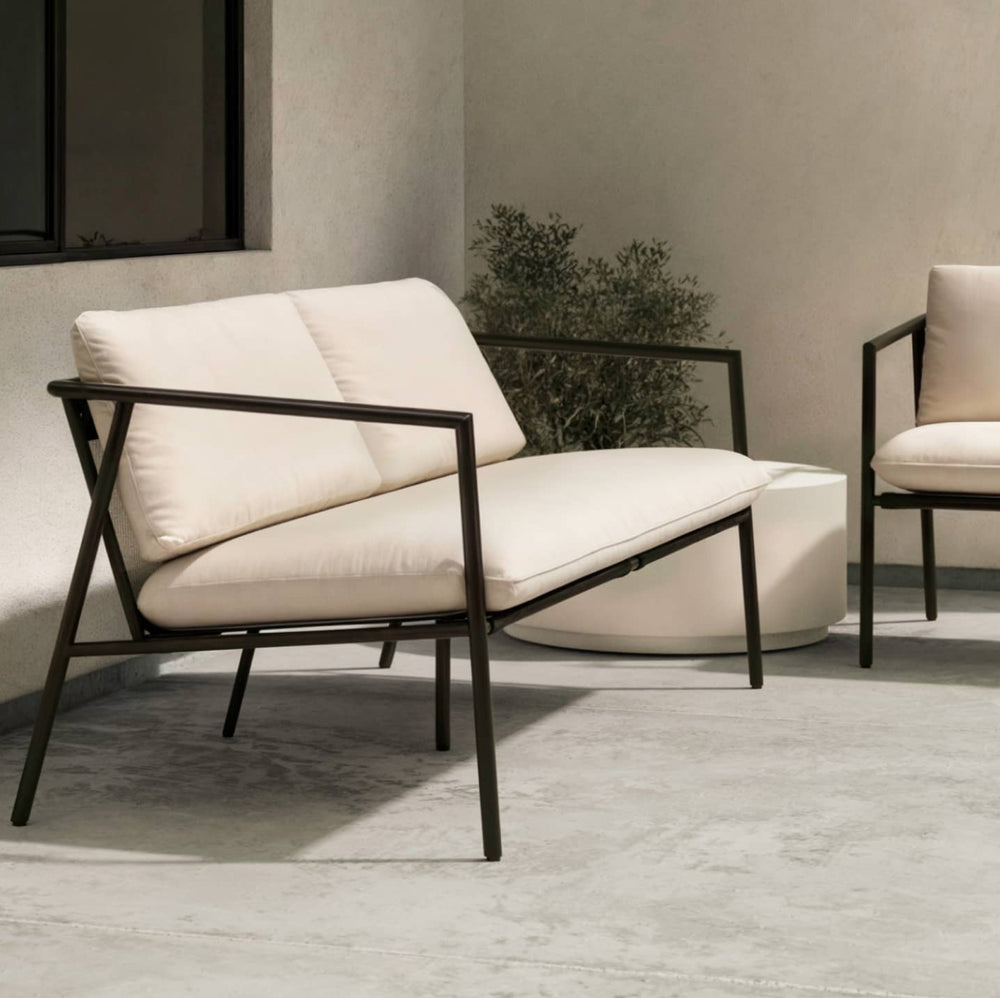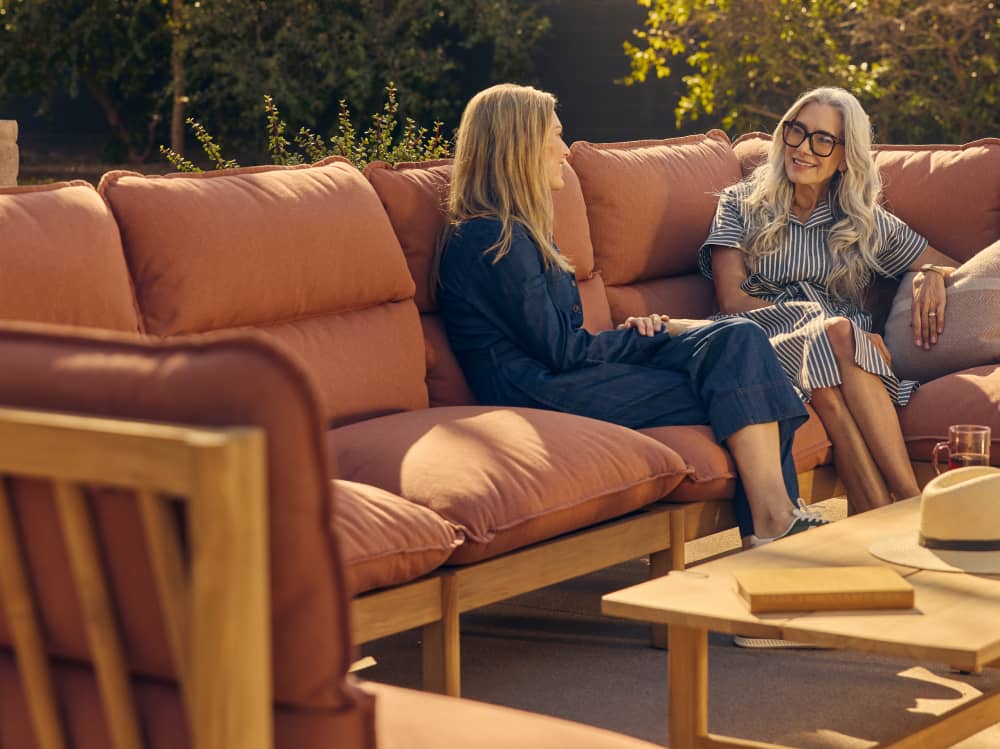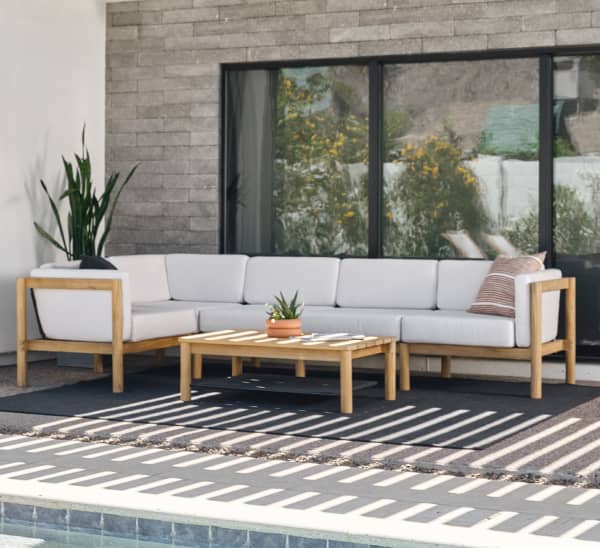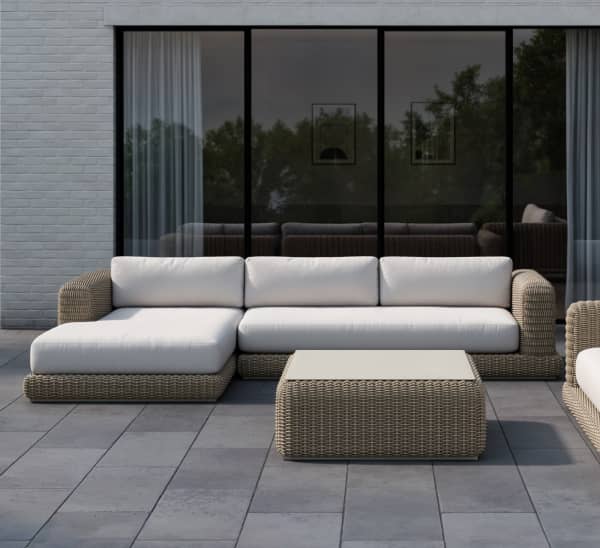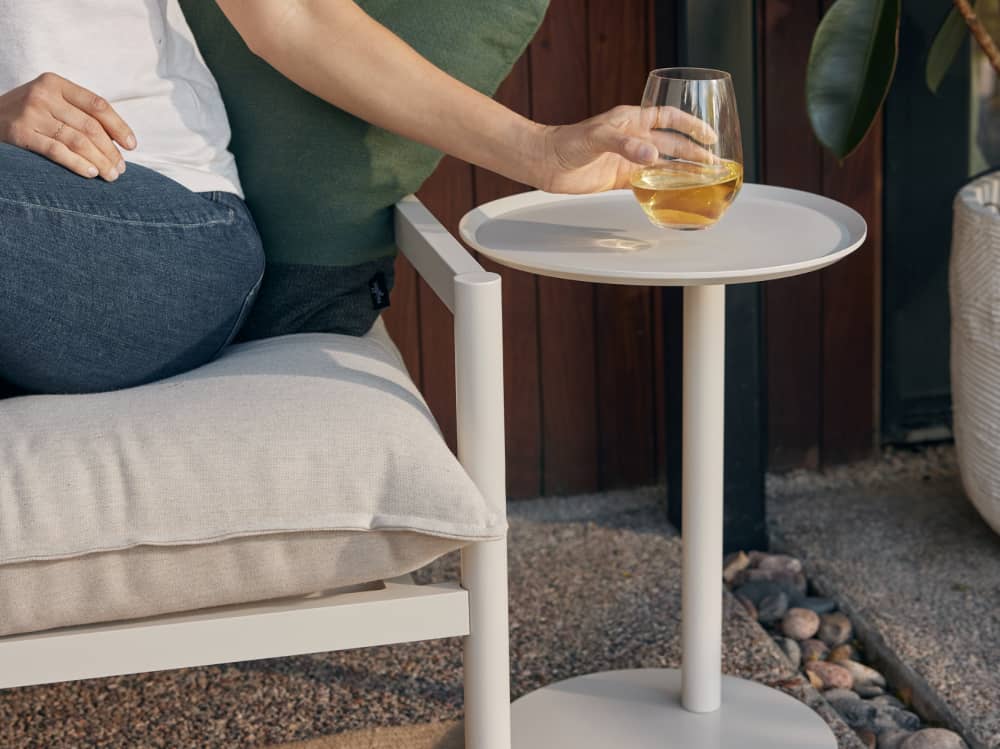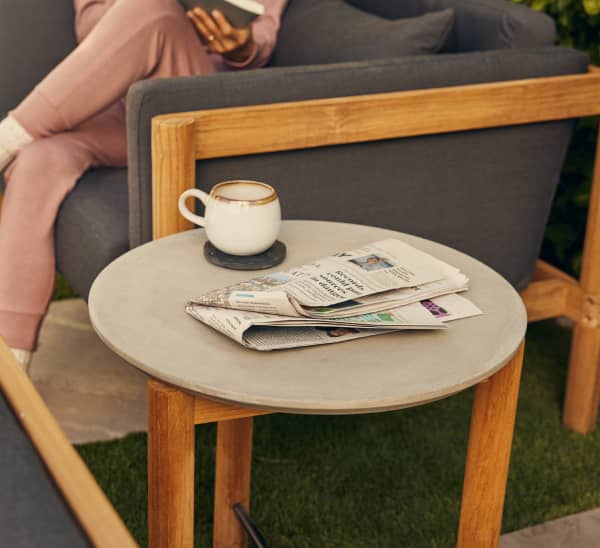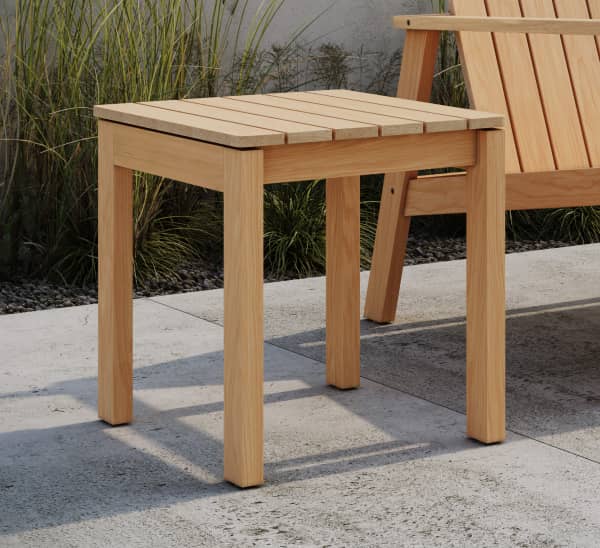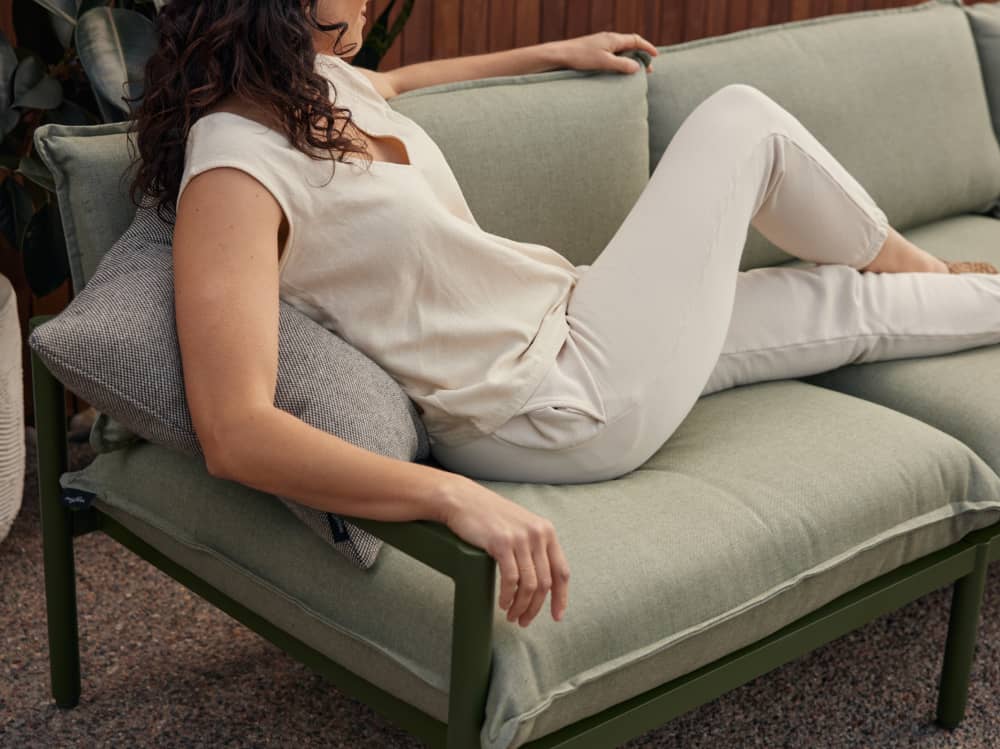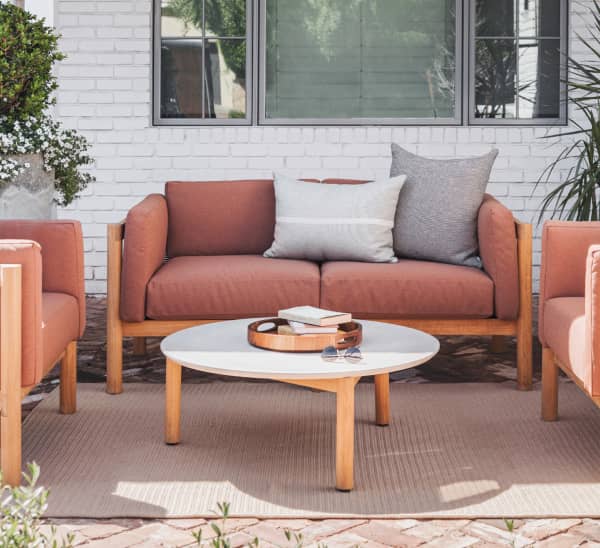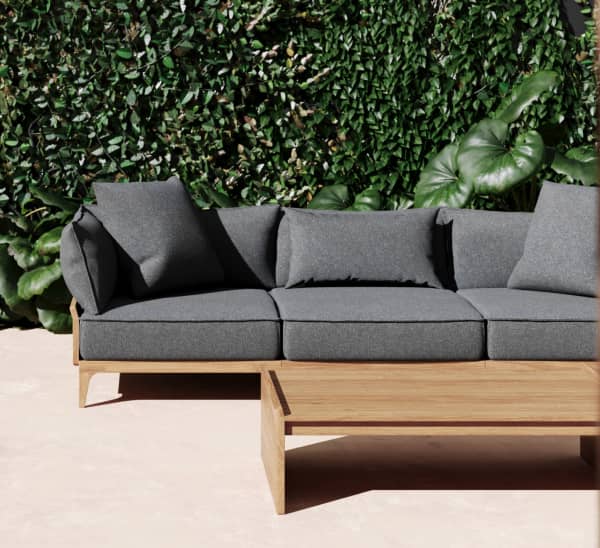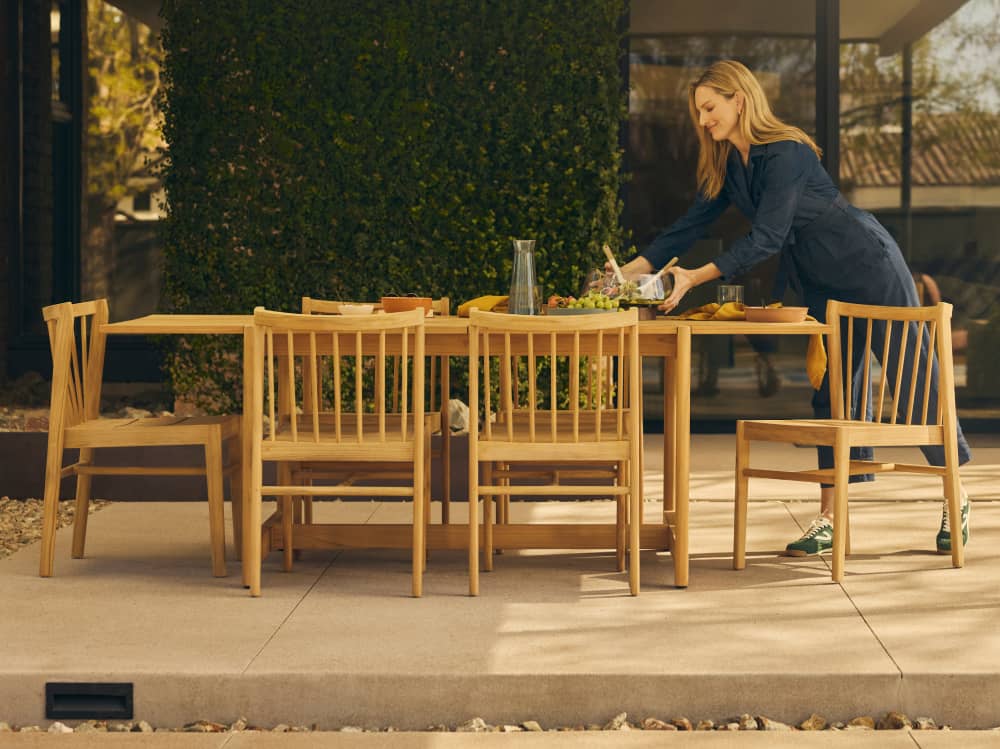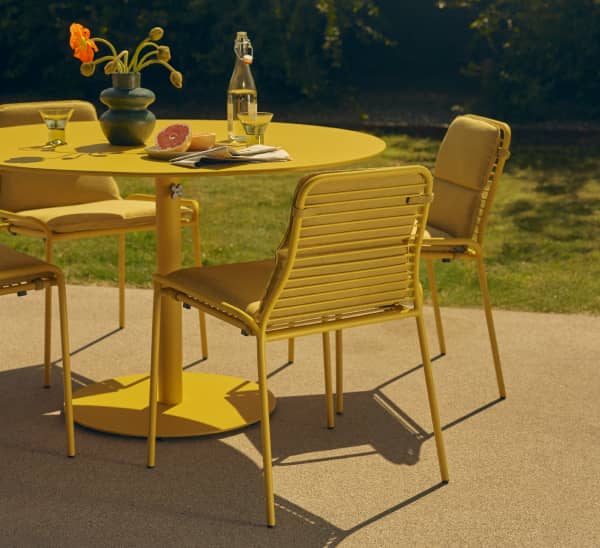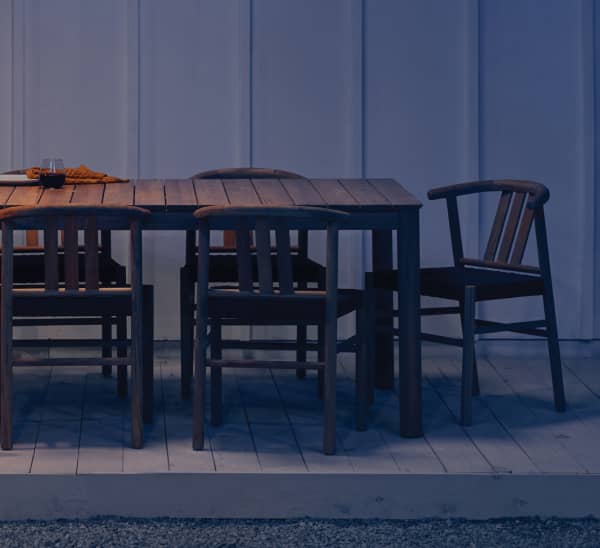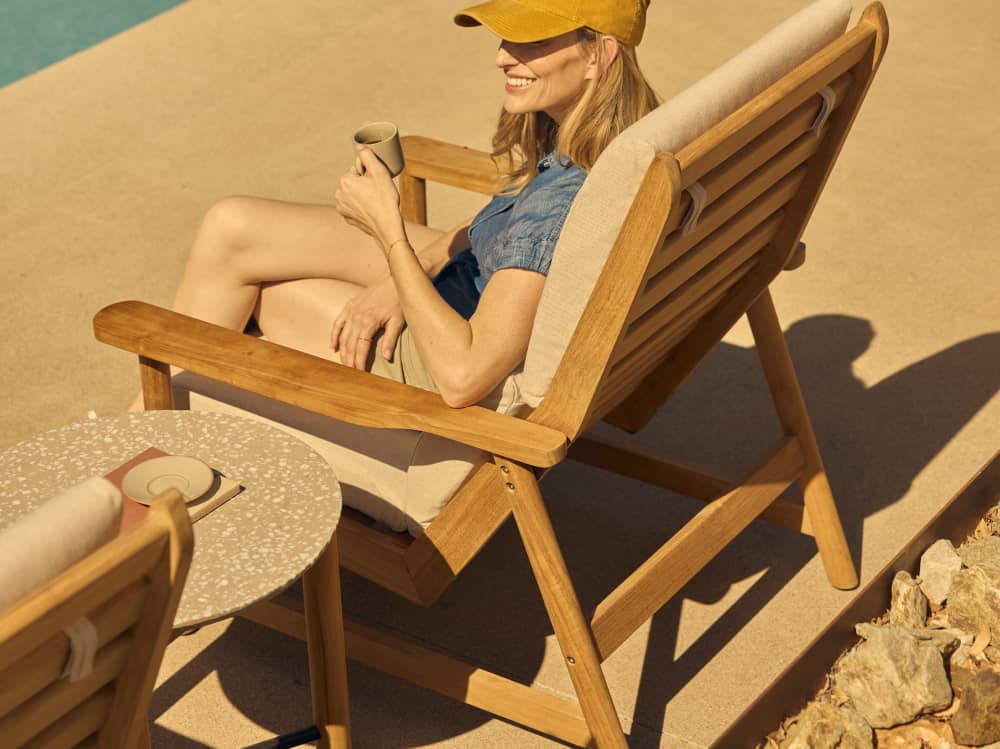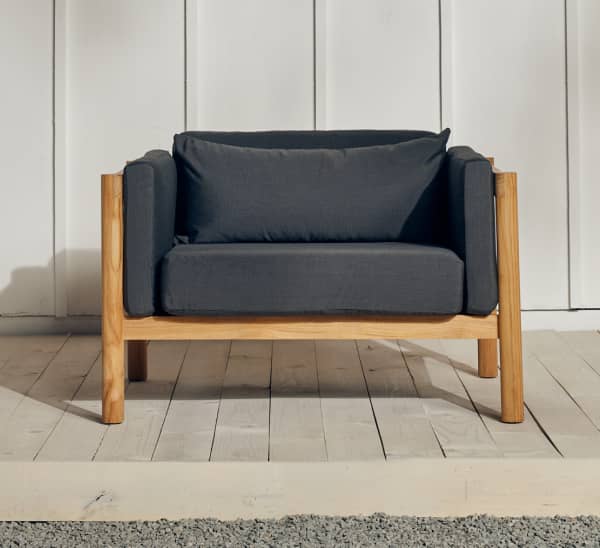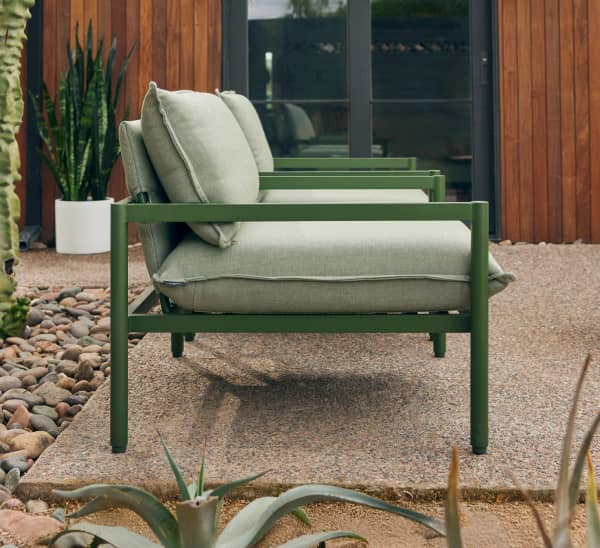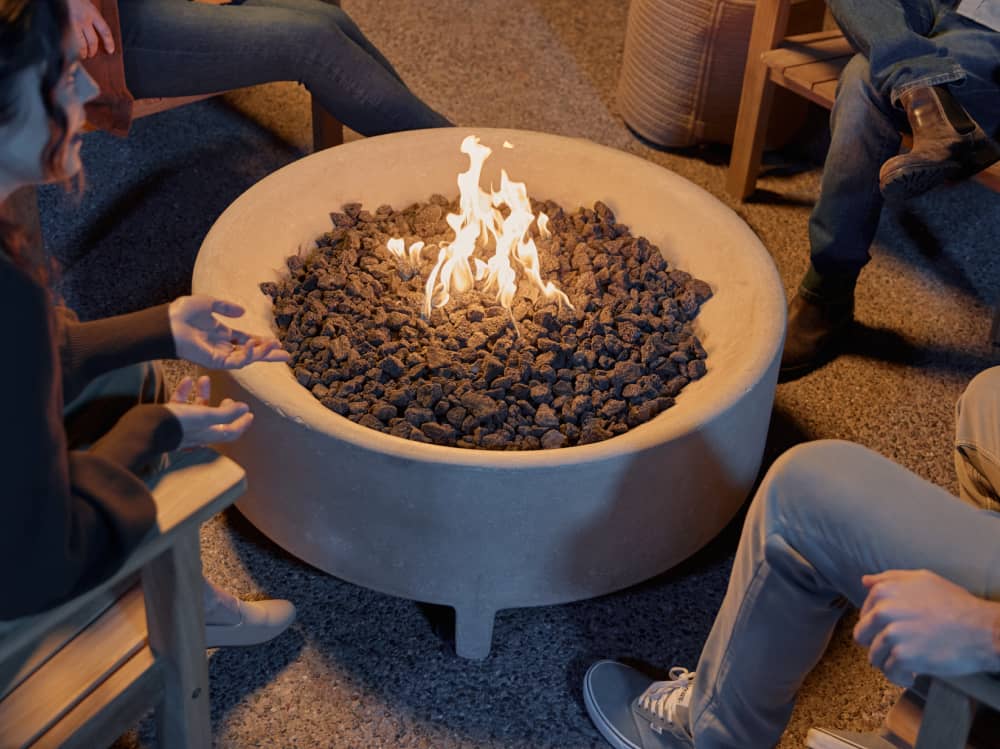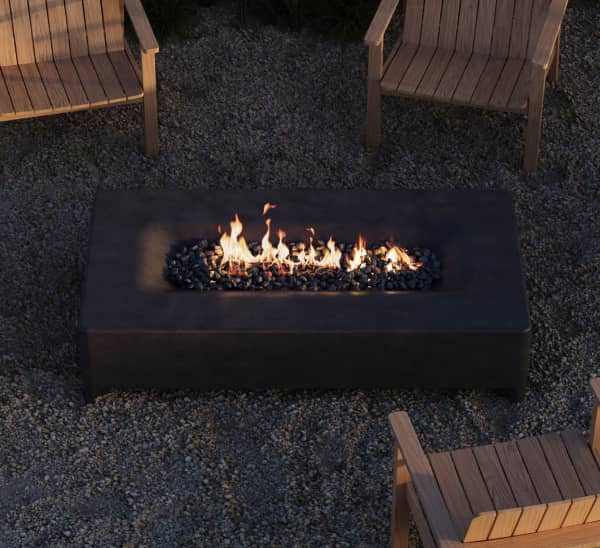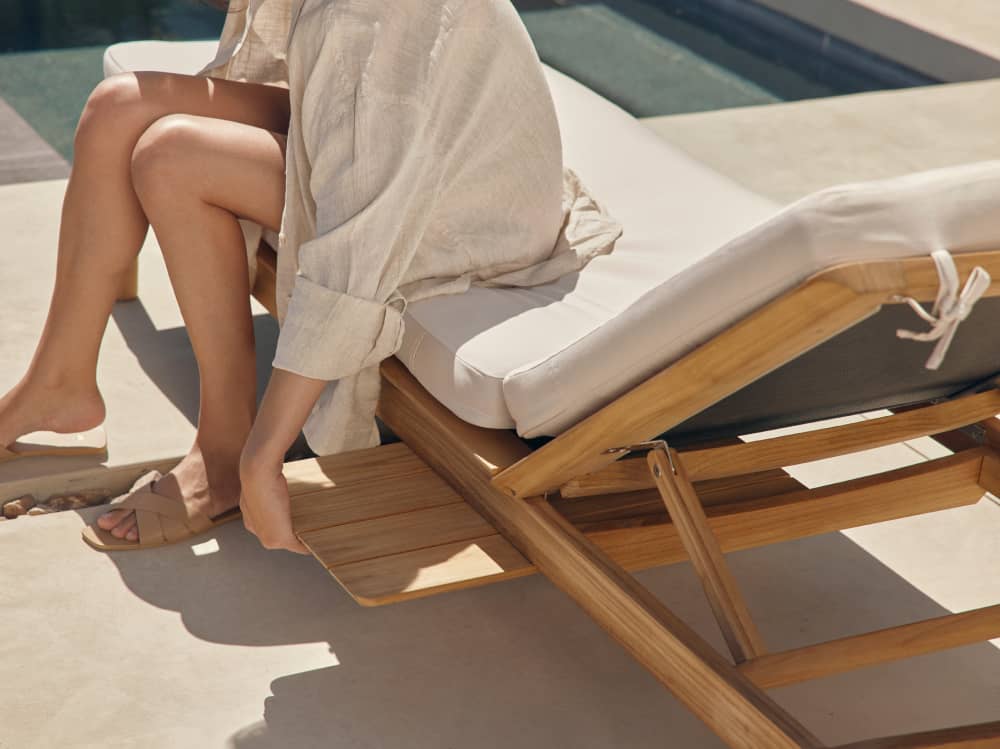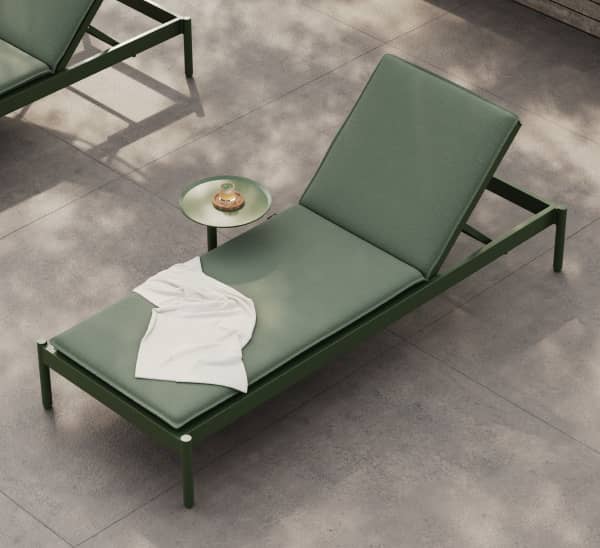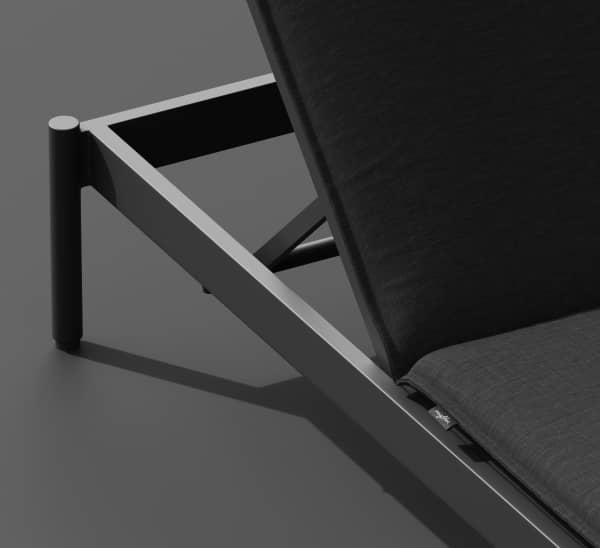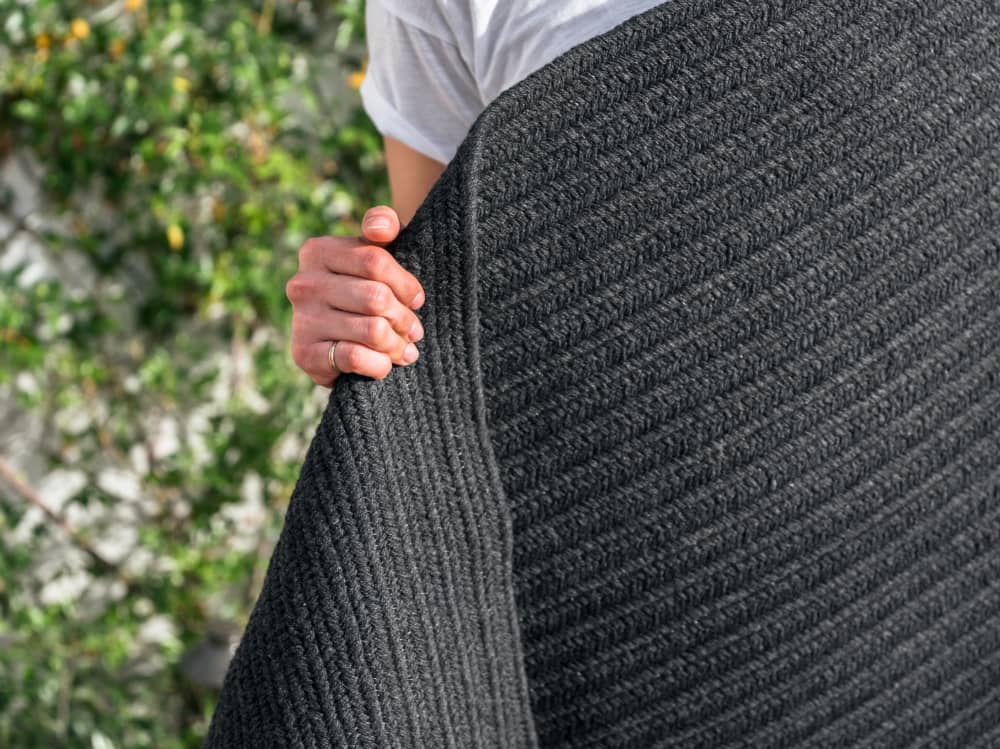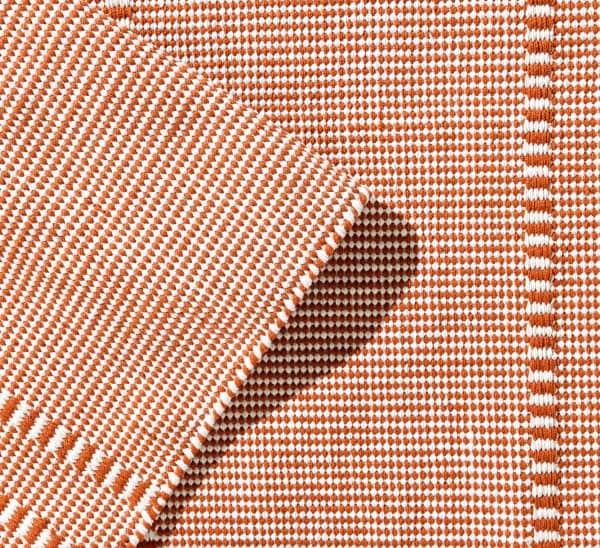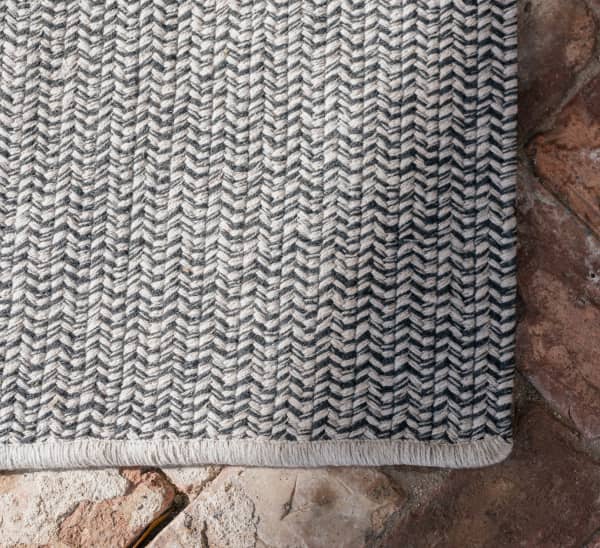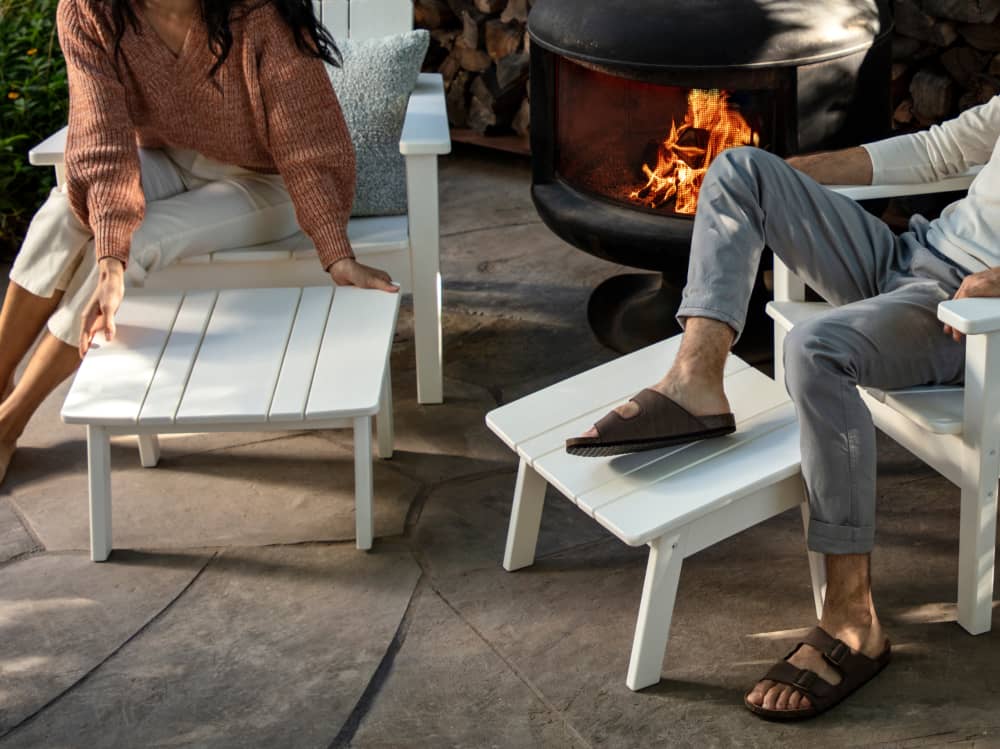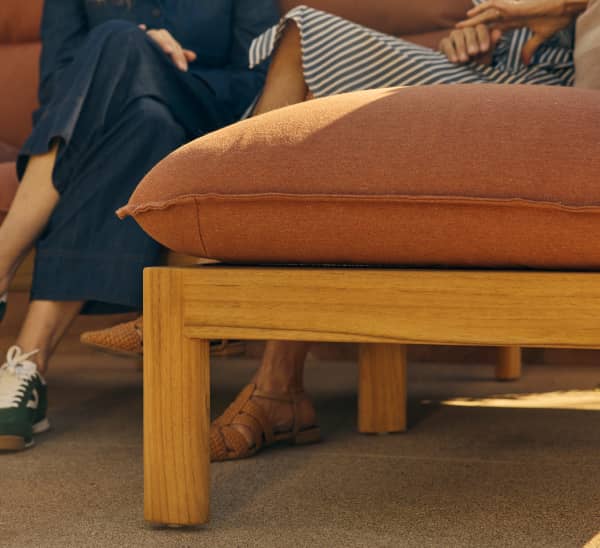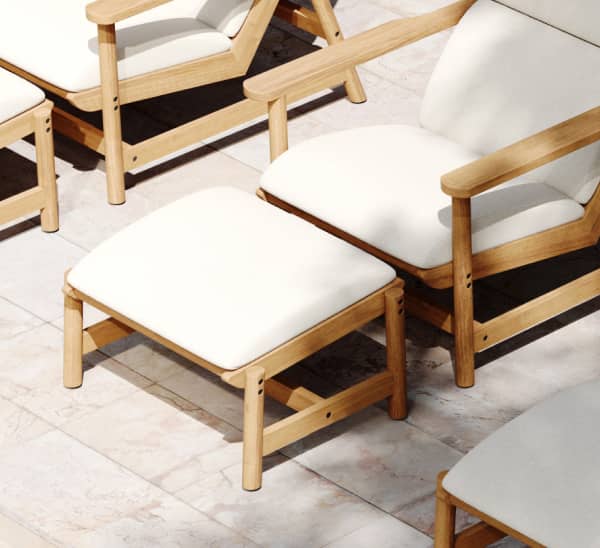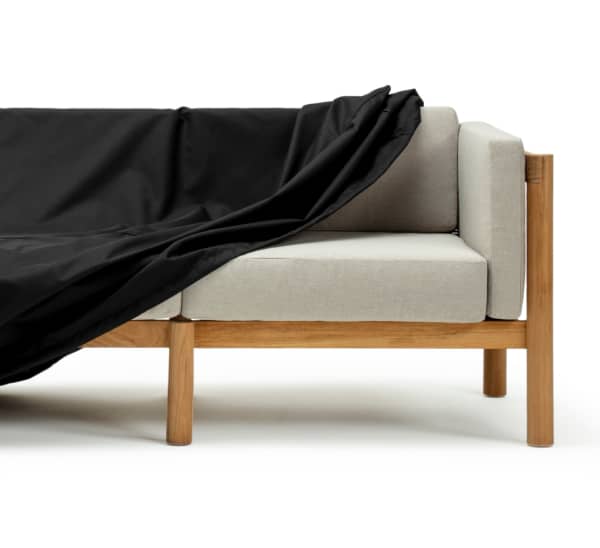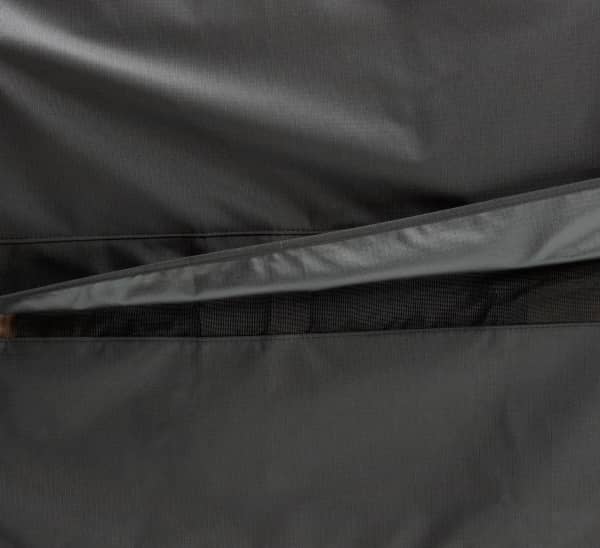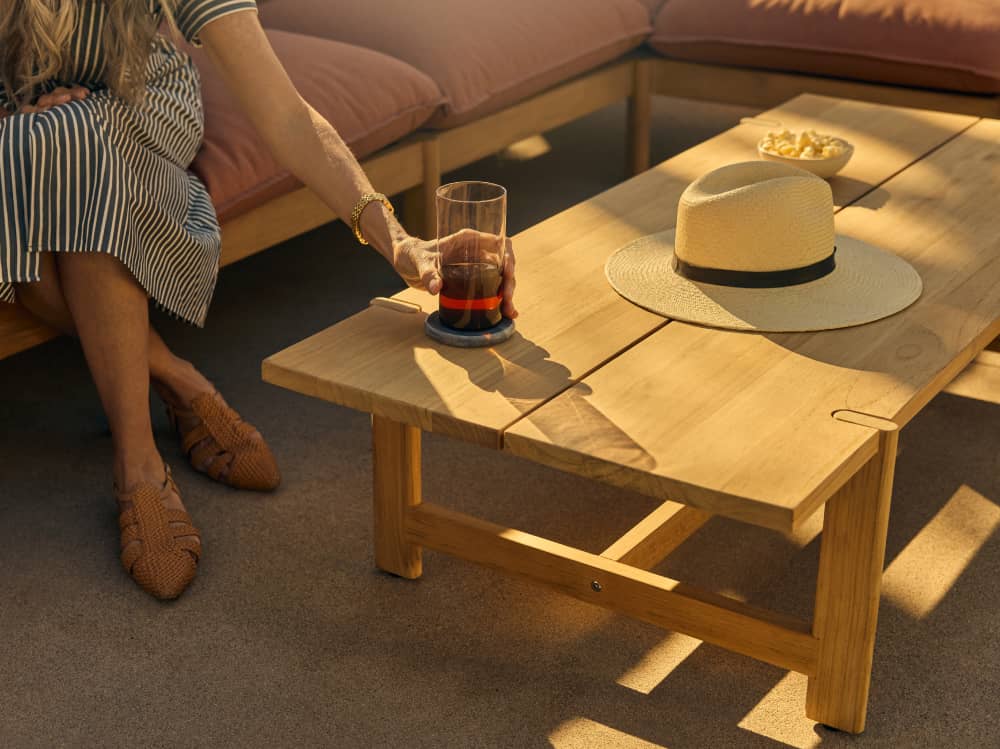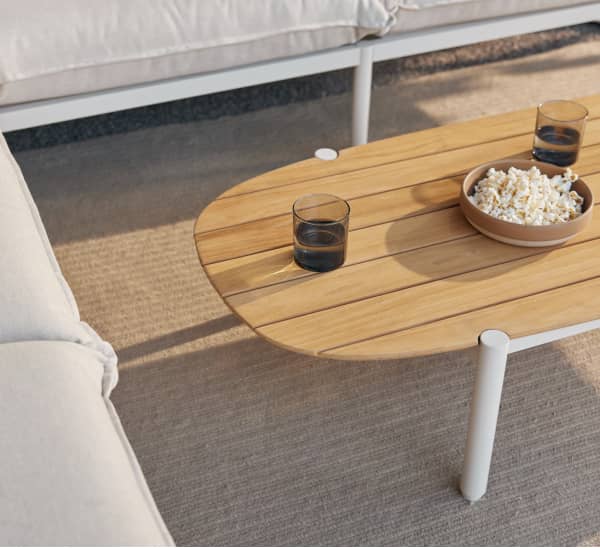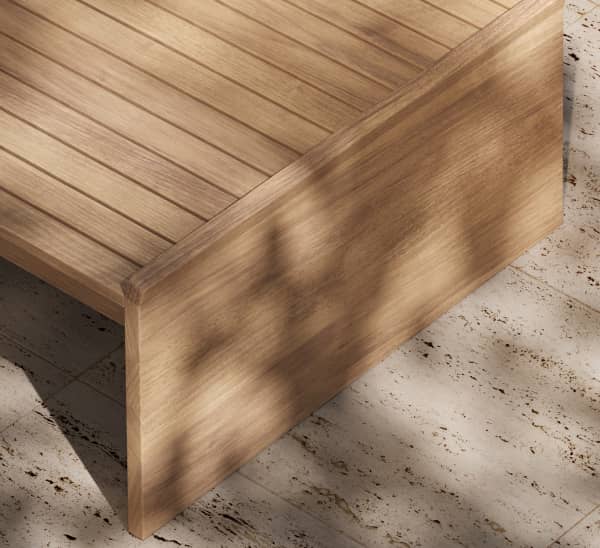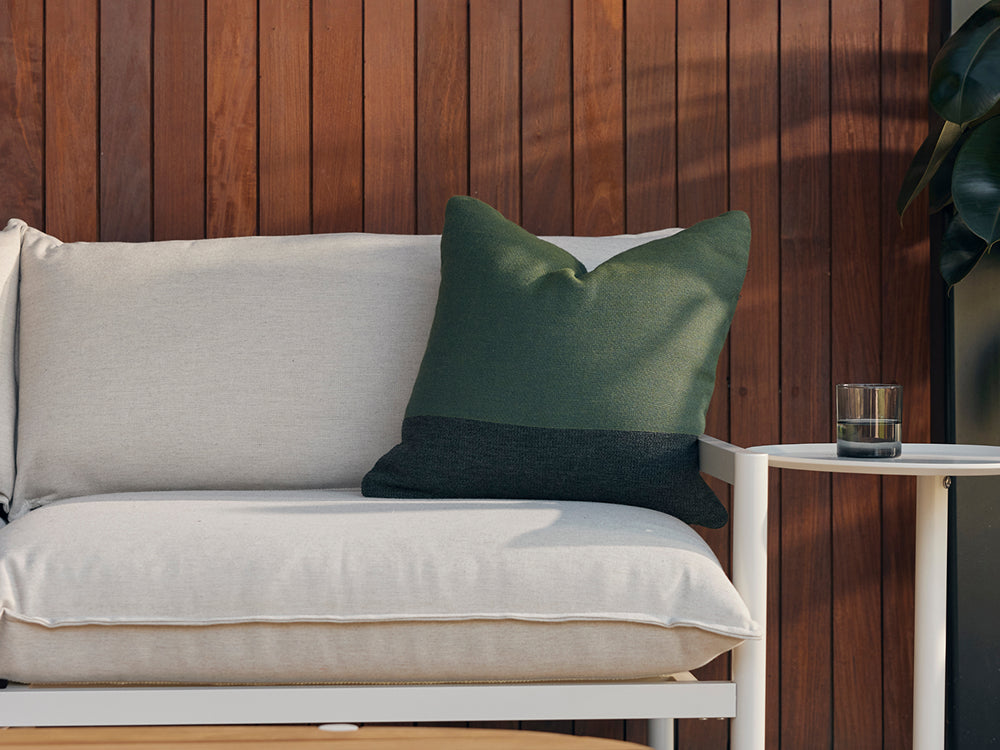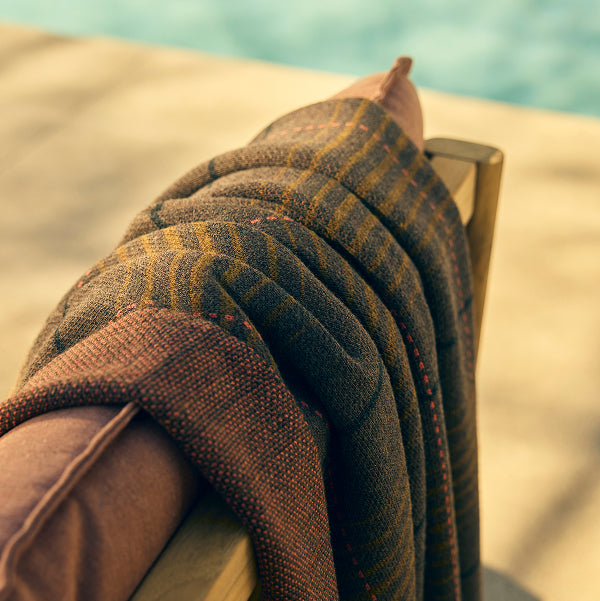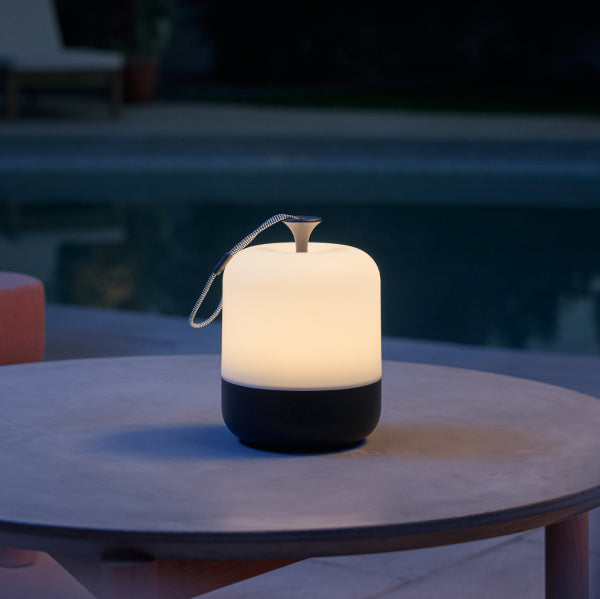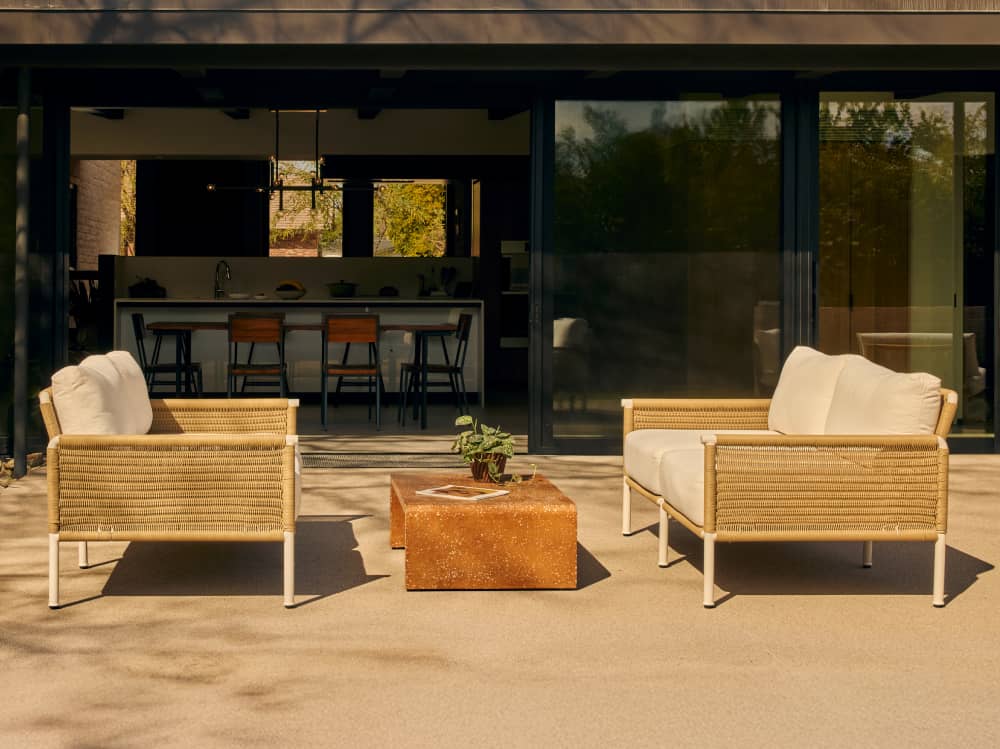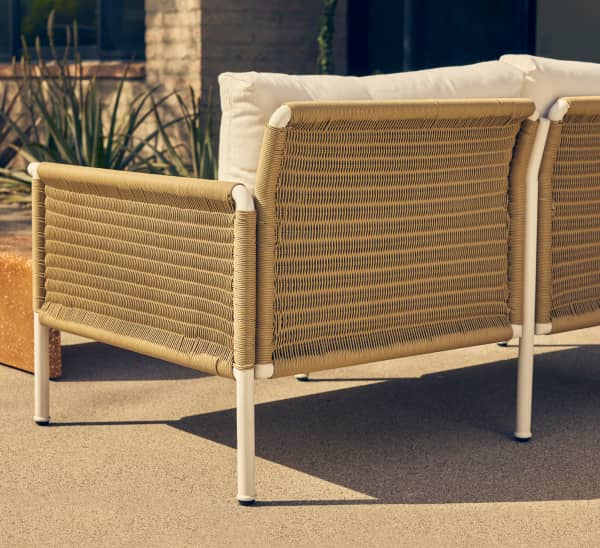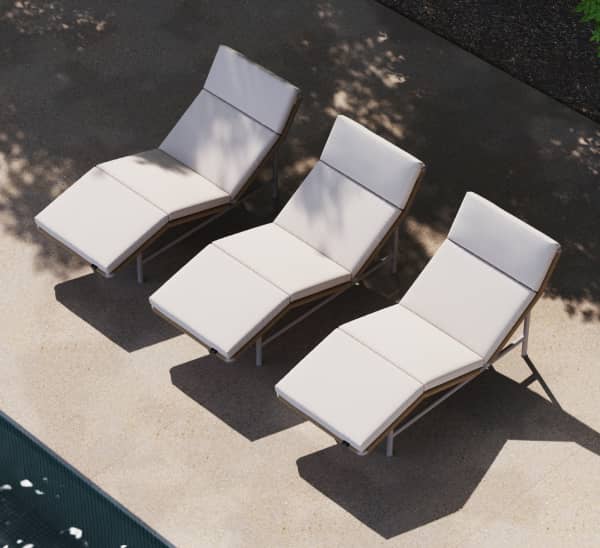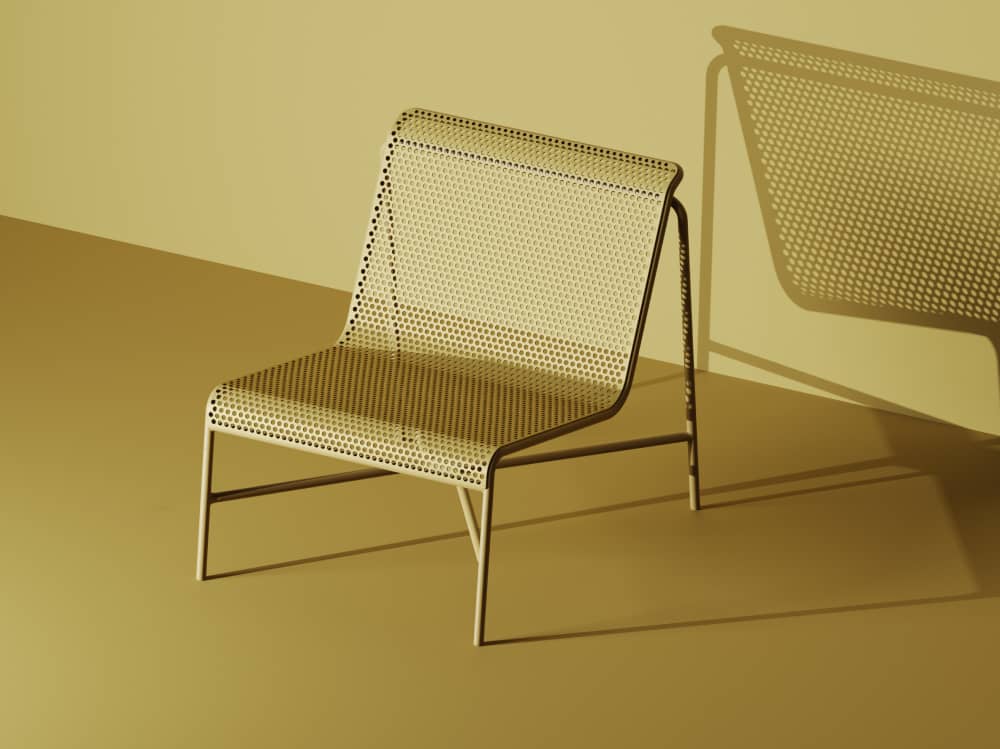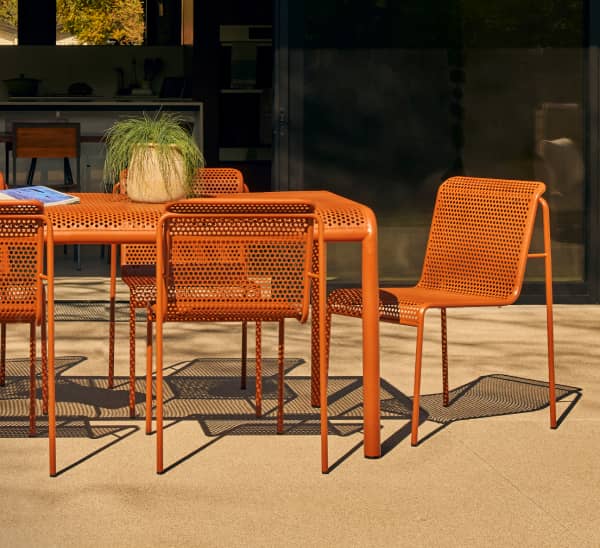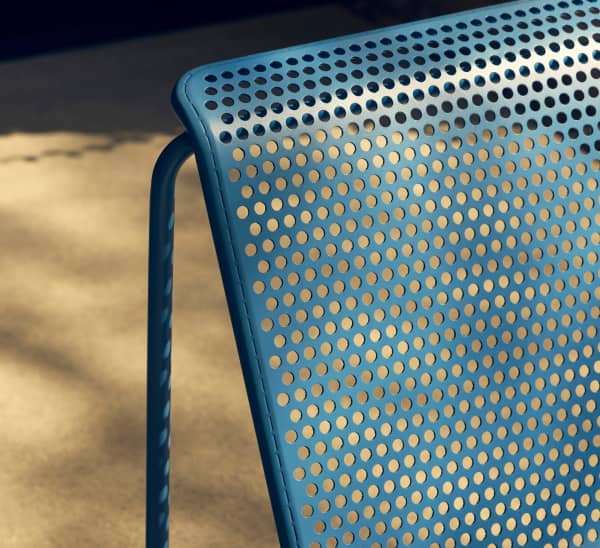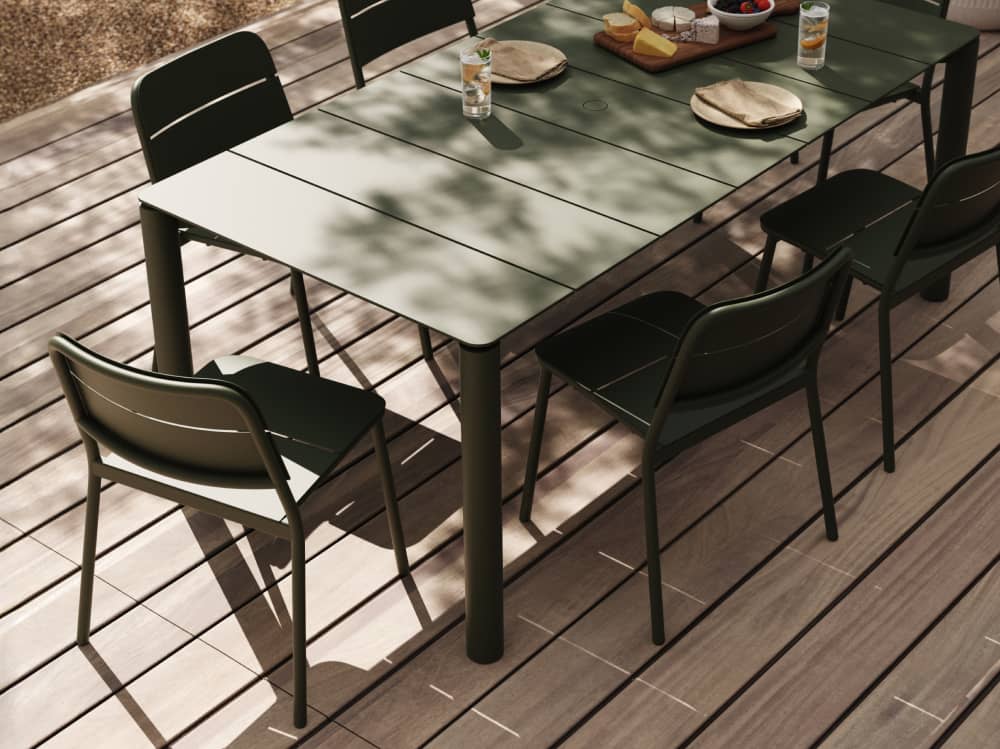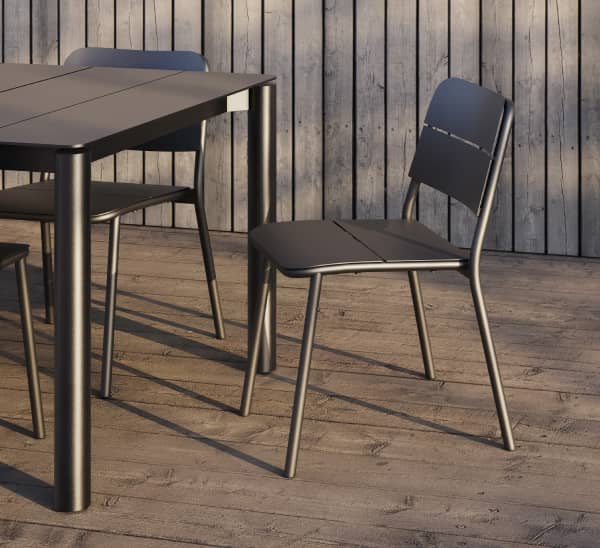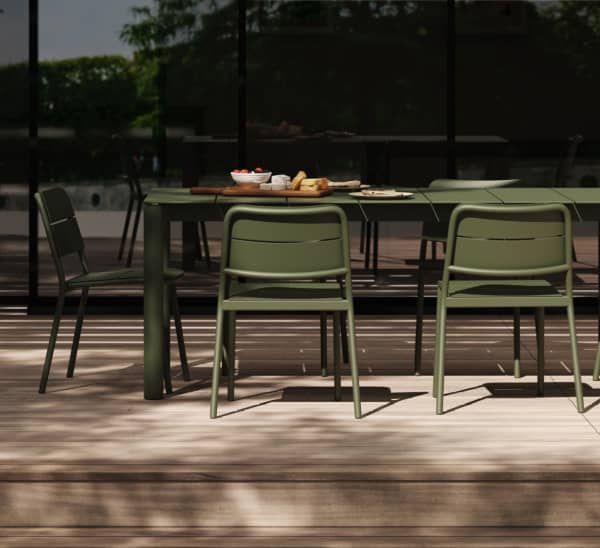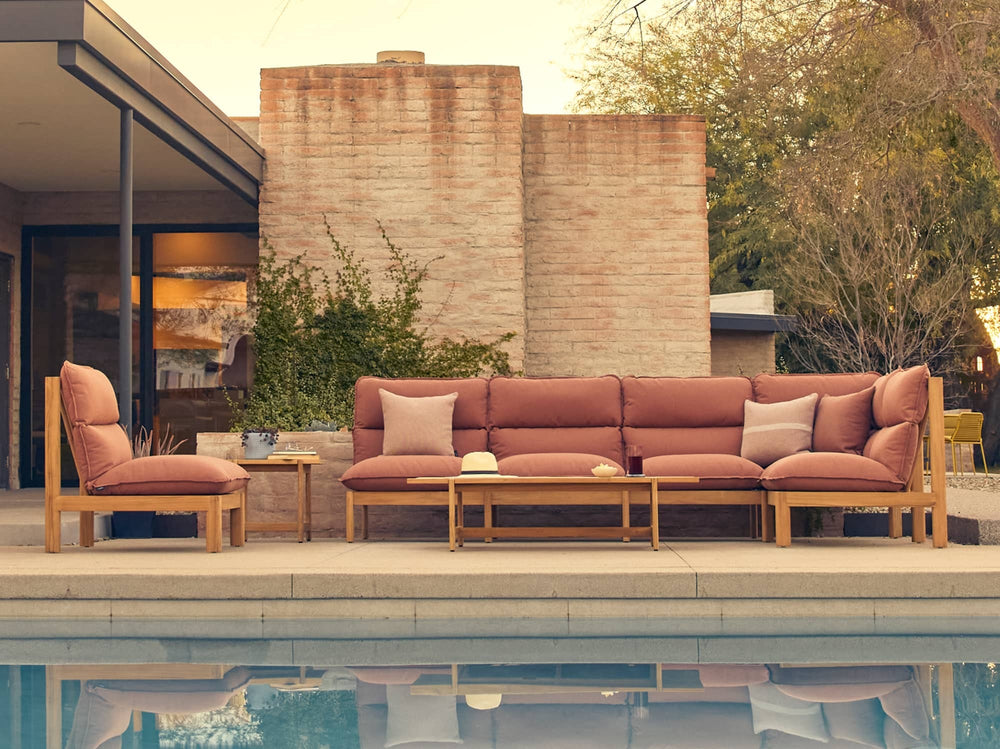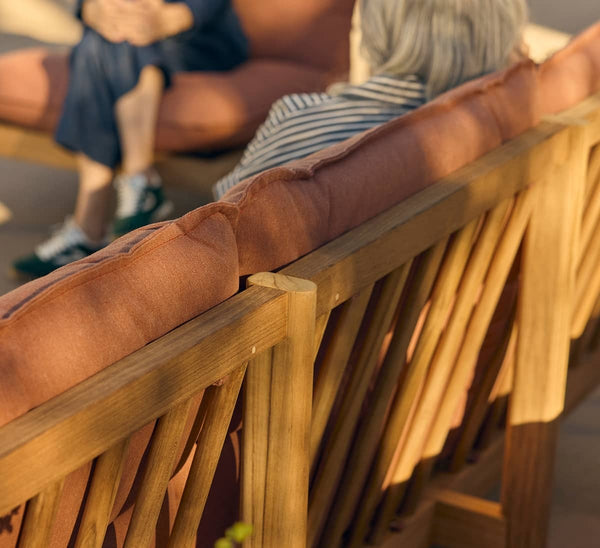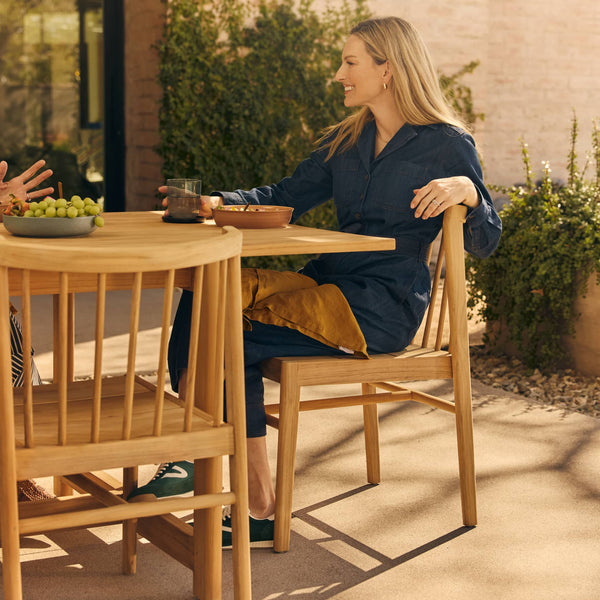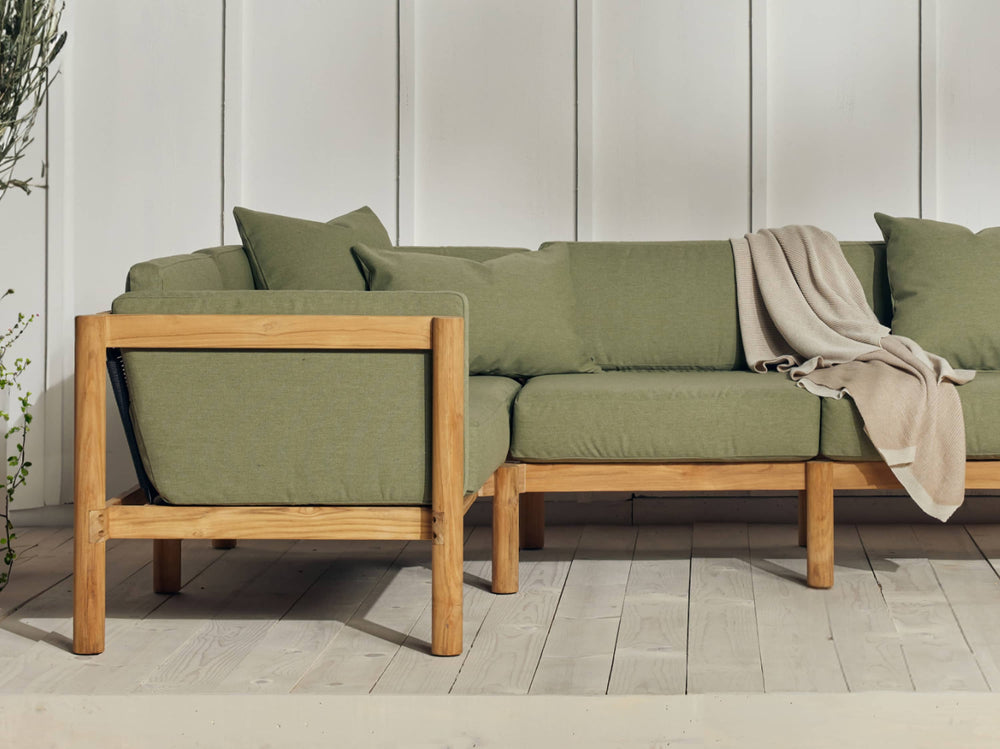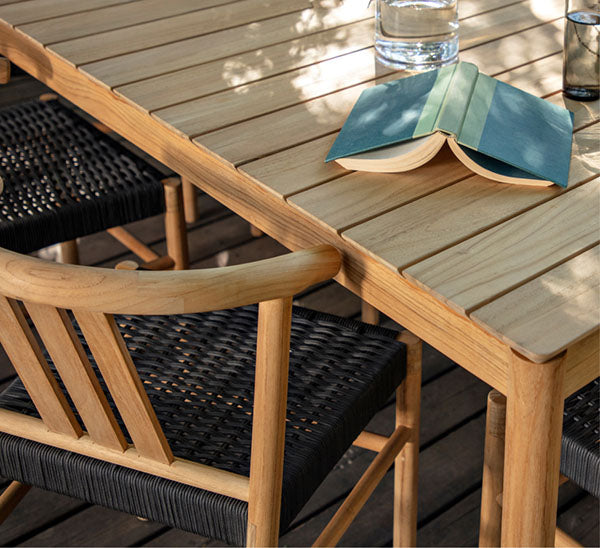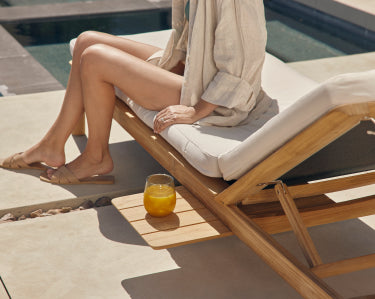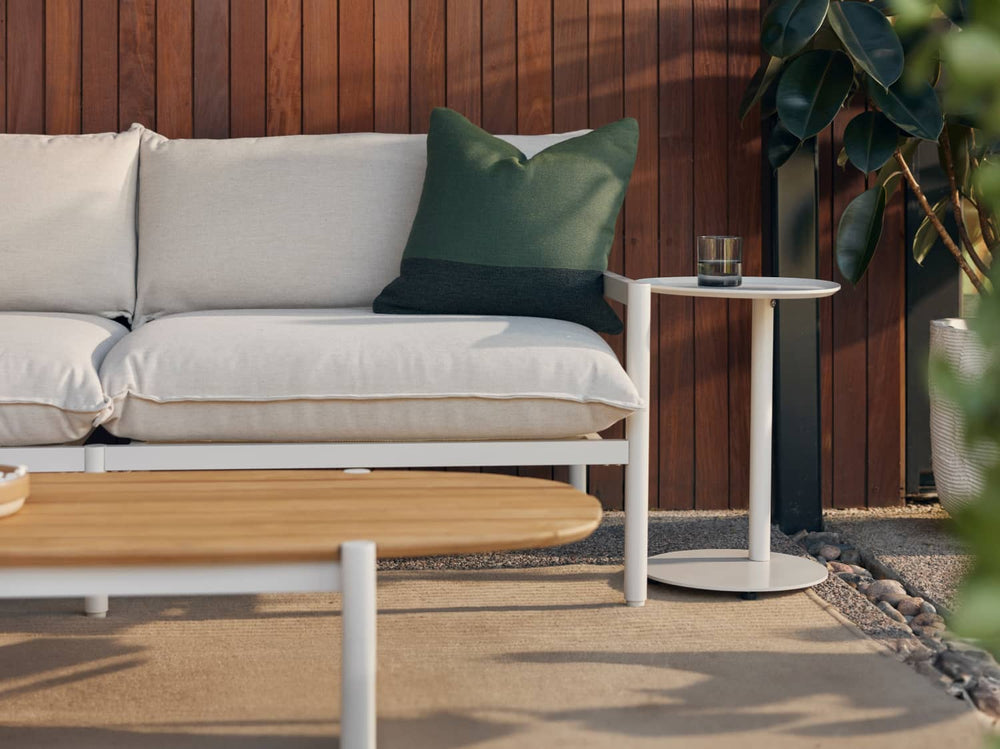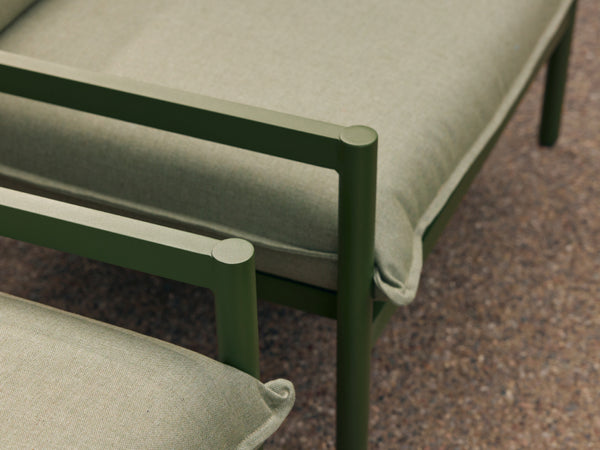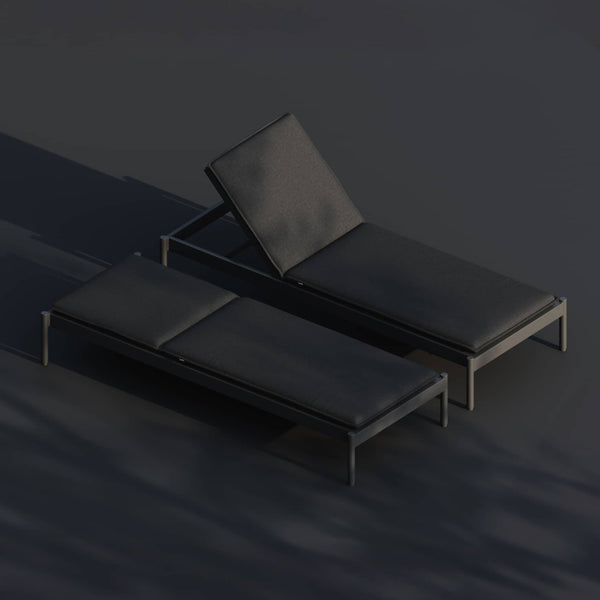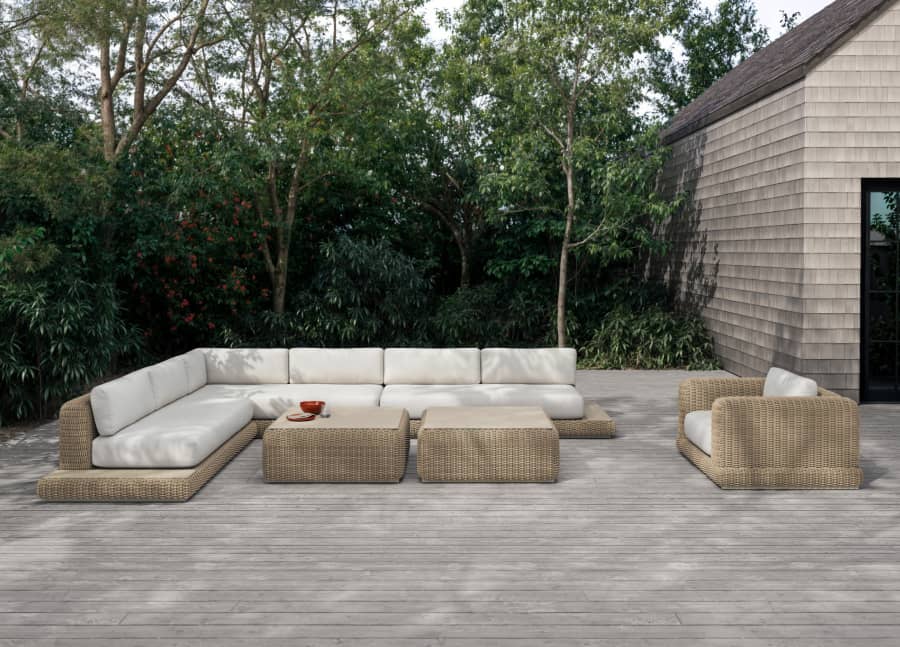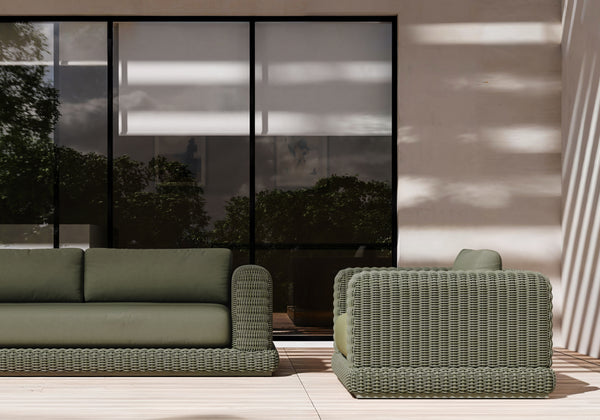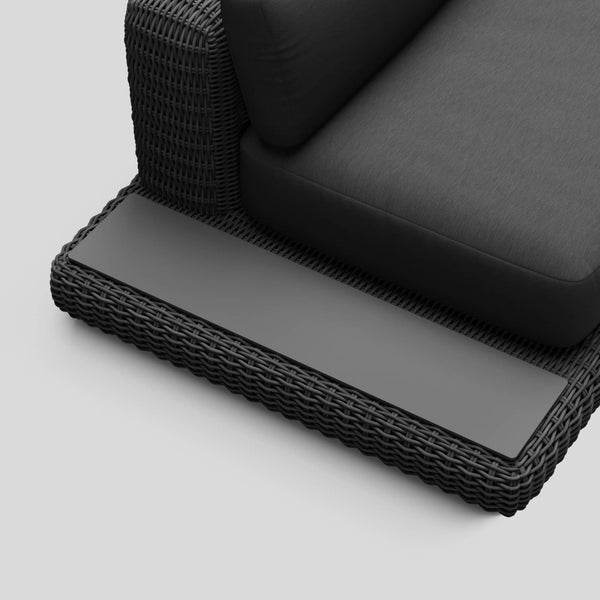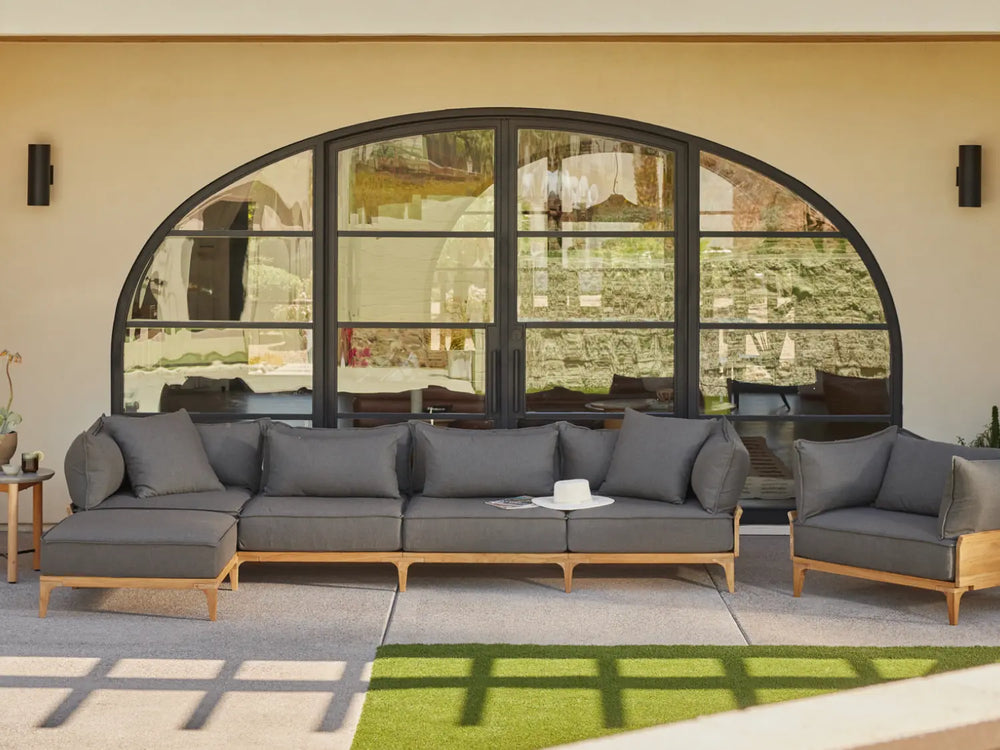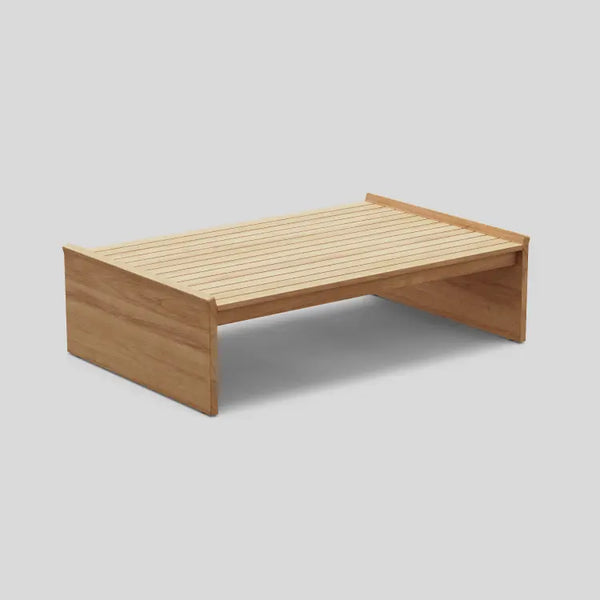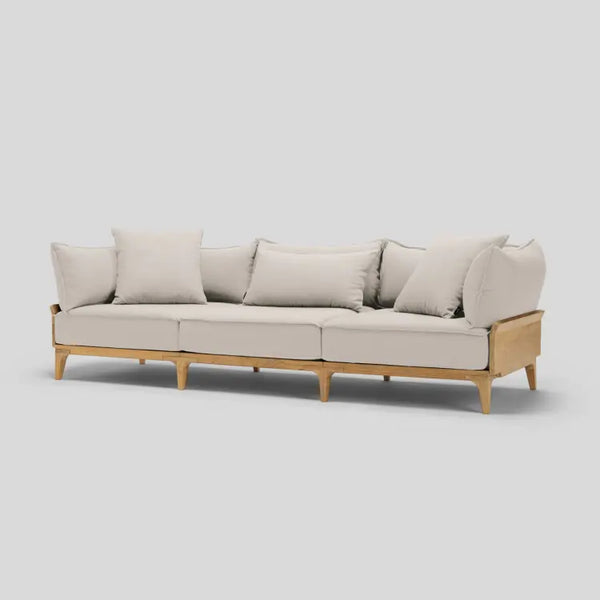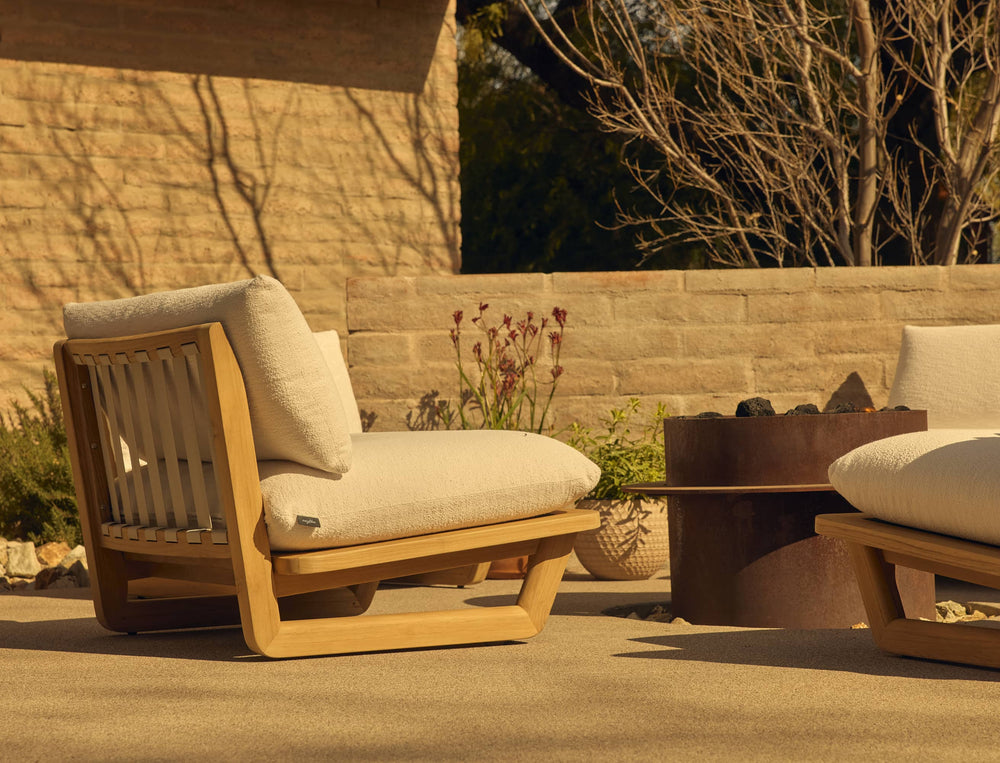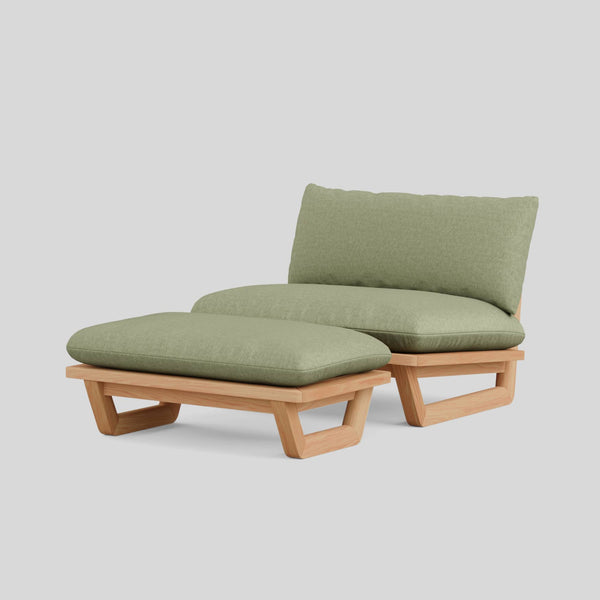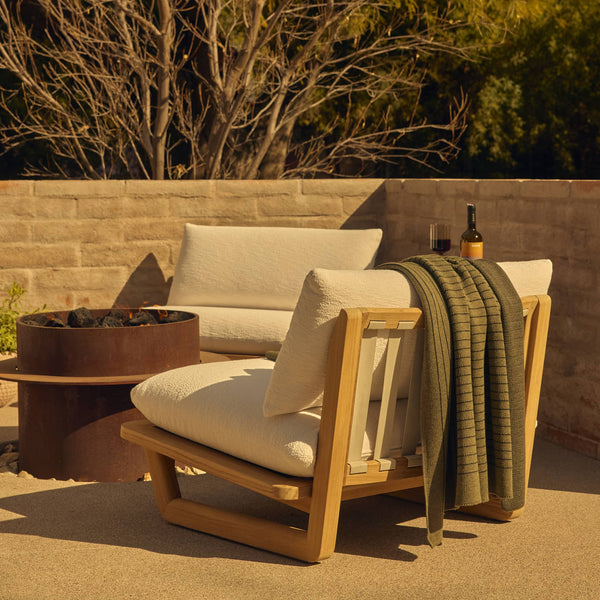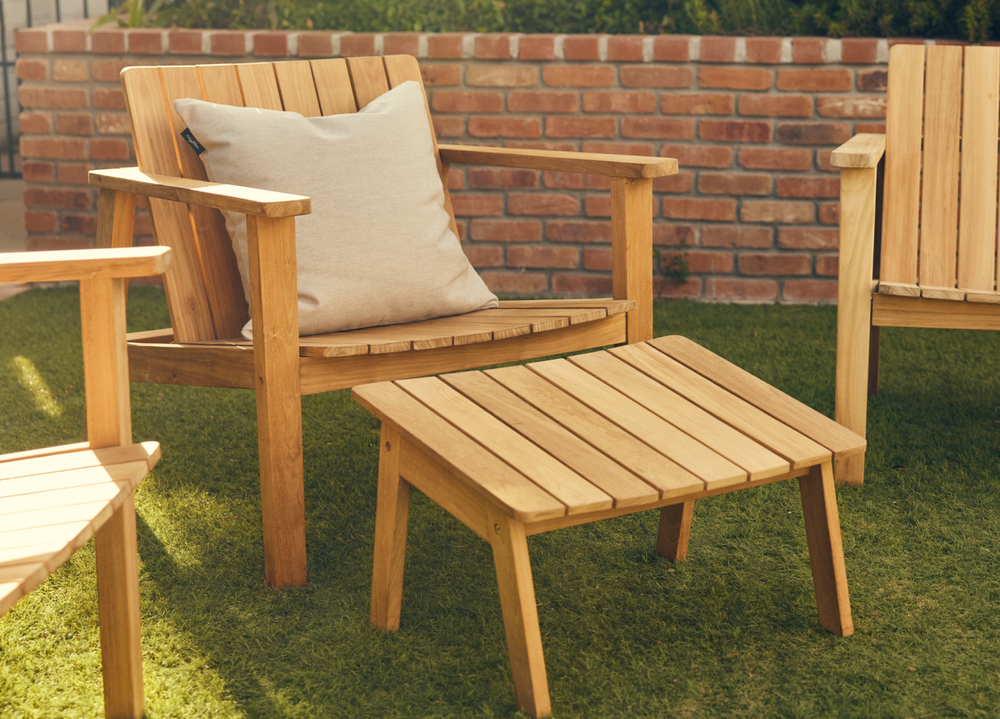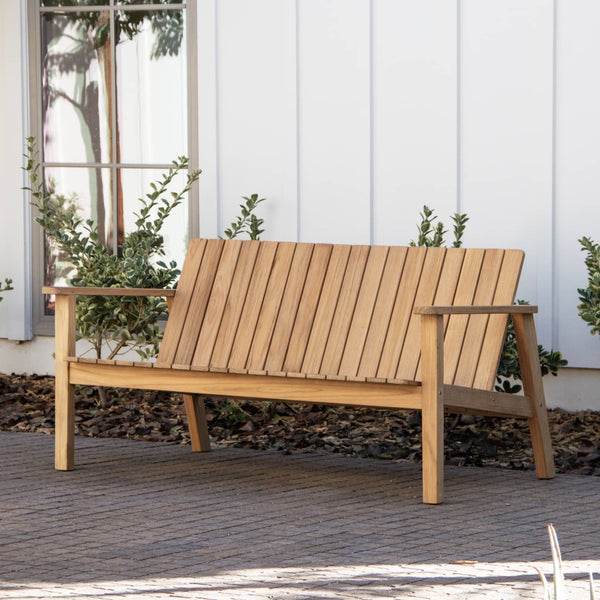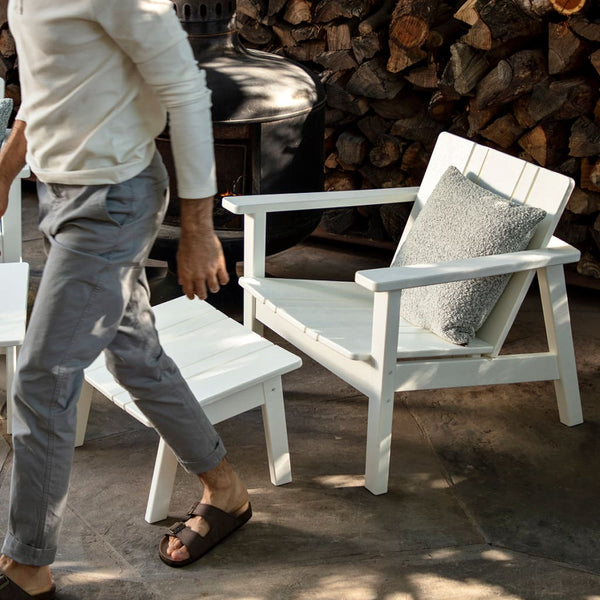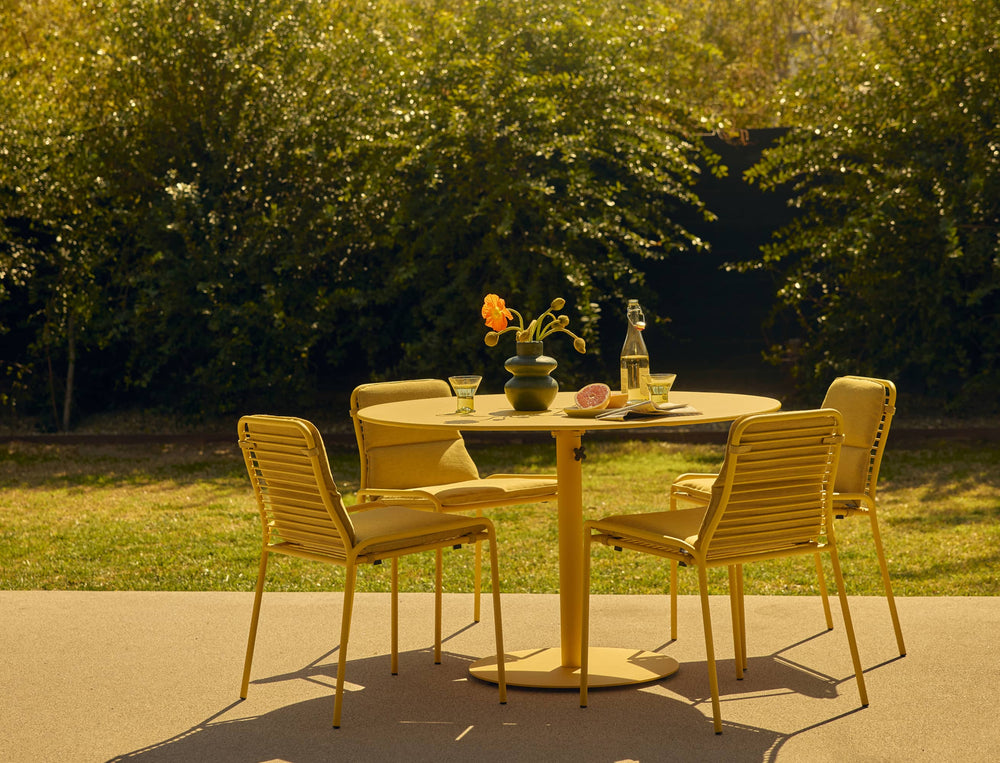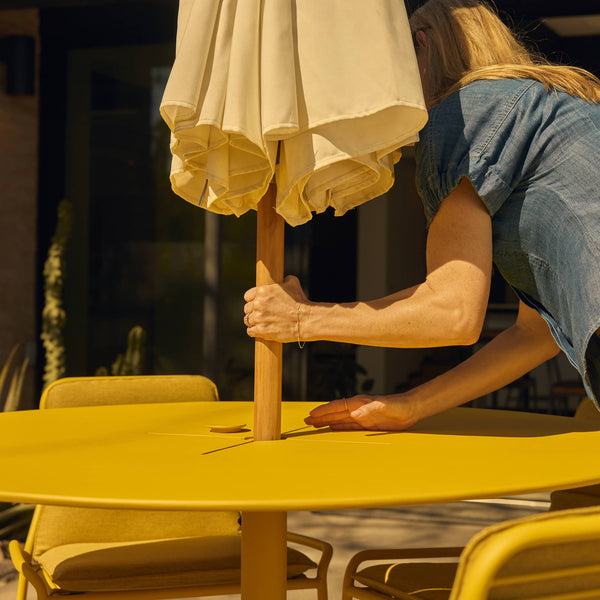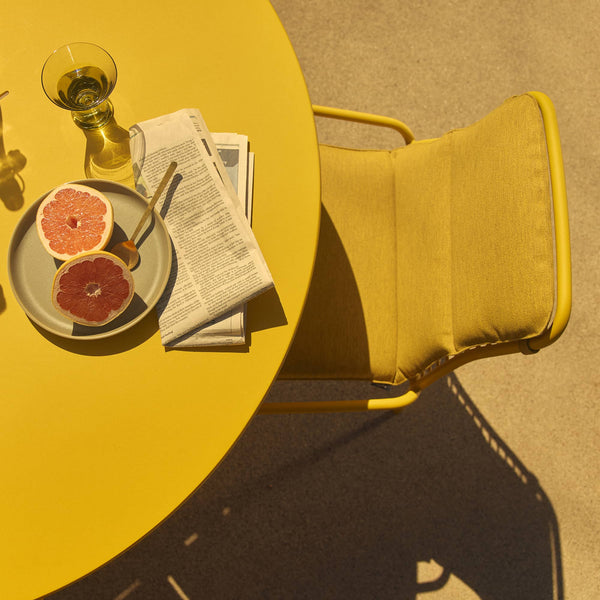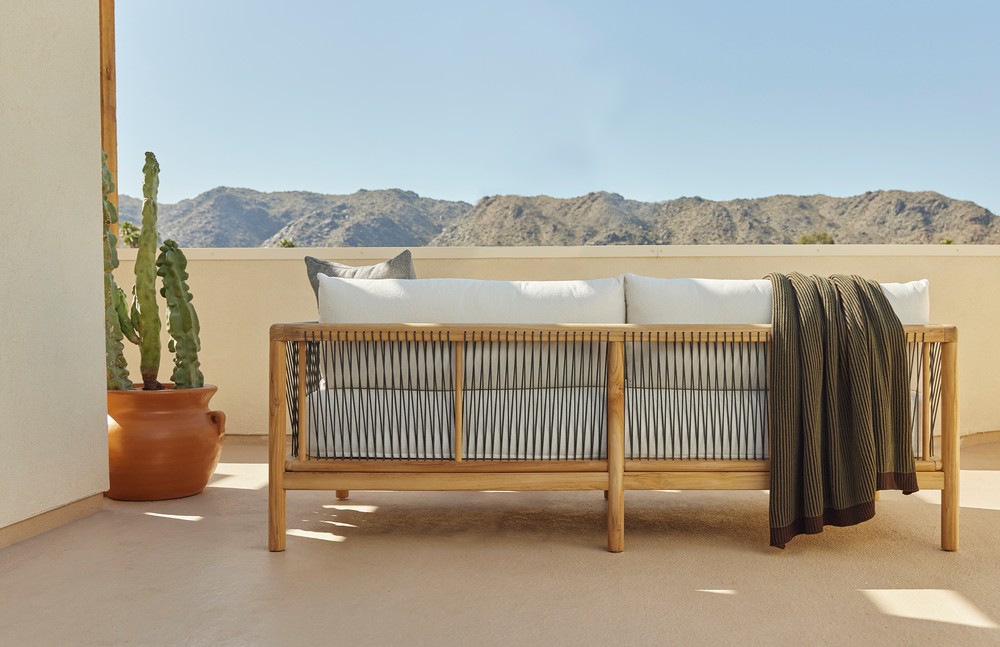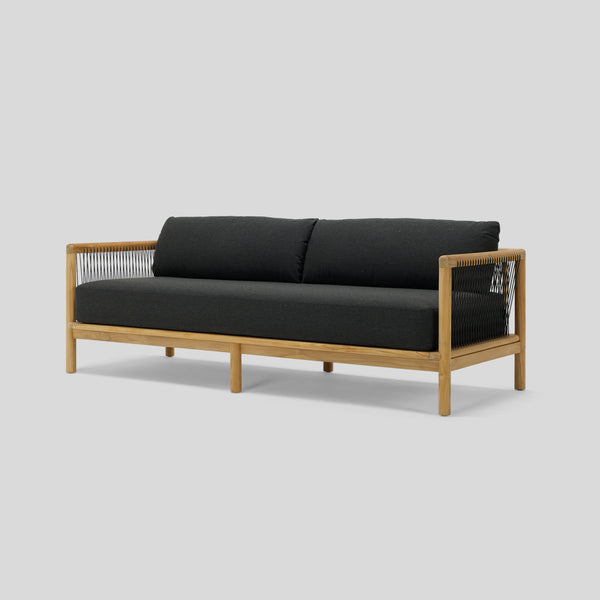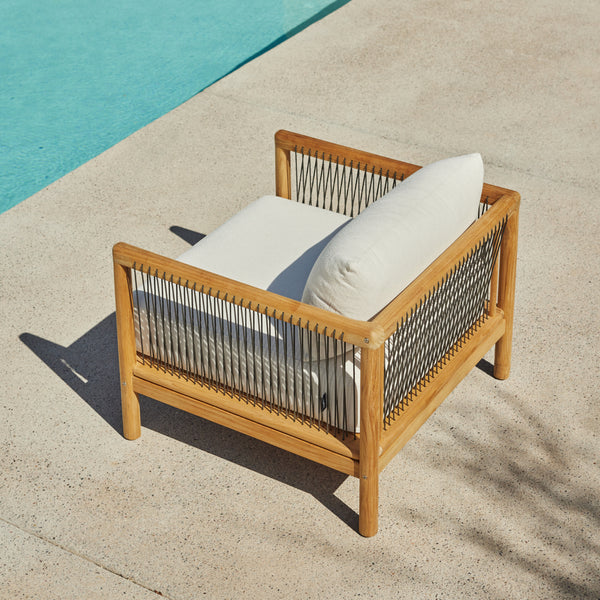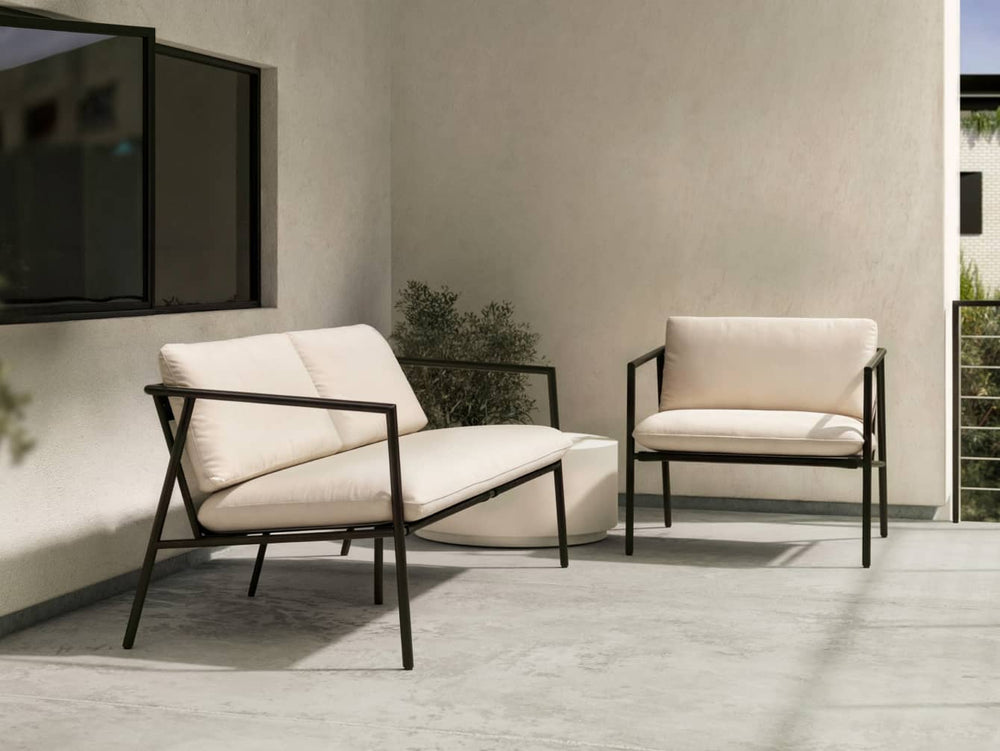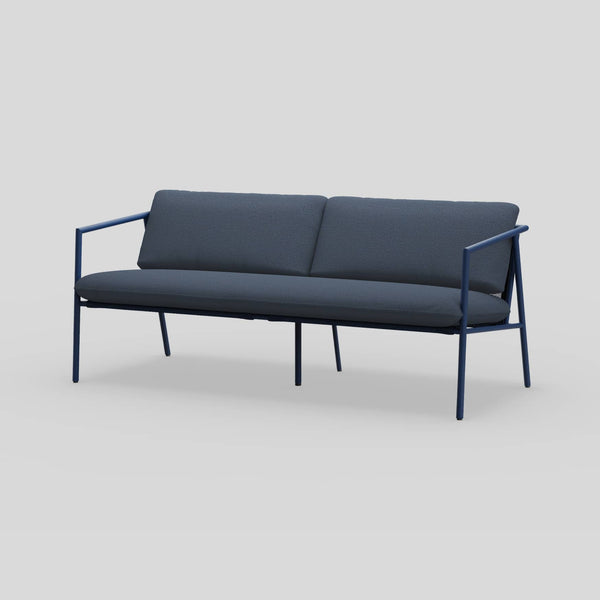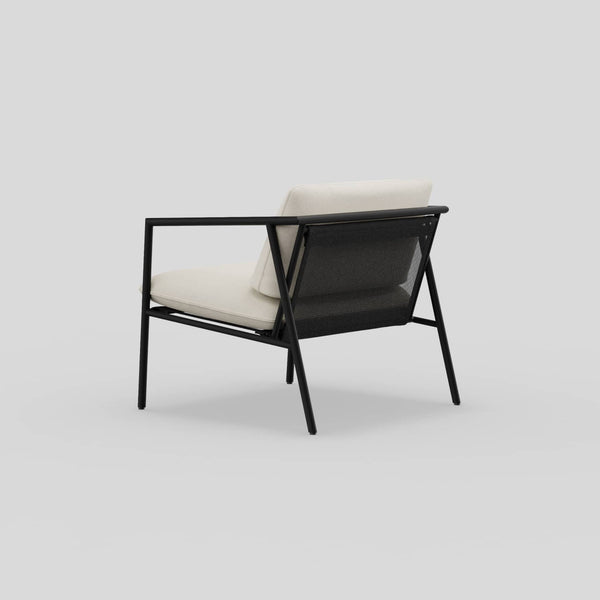What To Look for in Patio Furniture
Written by Neighbor Editorial Team | @neighboroutdoor | Opens in a new window. |
Discover what to look for in patio furniture, from materials and layout to durability and style, so you can create a comfortable, lasting outdoor space.

There’s nothing quite like enjoying your own private outdoor space on a nice day. At Neighbor, we believe your outdoor space should be as comfortable and thoughtfully designed as your indoor one. After all, during the warmer months, our patios, decks, and balconies turn into extensions of our homes.
To ensure your investment brings years of enjoyment and reflects your personal style, we’ll guide you on what to look for in patio furniture and simplify the process of selecting which pieces work best for your space and needs. Using the tips in this patio furniture buying guide can enhance your outdoor living experience with a space that encourages connection, relaxation, and enjoyment.
Key Takeaways
Considering what to look for in patio furniture means more than just picking pretty pieces. Start by measuring your space accurately and determining how you'll use it, then test your layout to create an inviting flow. Consider storage and seasonality, and always invest in quality pieces, like those from Neighbor, for long-term value. Finally, accessorize thoughtfully to complete your outdoor style. By focusing on these elements, you'll select furniture that's both beautiful and built to last.7 Things To Look for in Patio Furniture
Choosing the right patio furniture is essential for enjoying outdoor spaces to their fullest. But with so many options available, understanding what to look for can feel overwhelming. Here are seven key things to consider when shopping for patio furniture.

1. Measure Your Outdoor Space
Before you even begin to browse, accurately measure your outdoor space. This will allow you to find pieces that fit well, both in terms of proportion and function. Begin by measuring the full length and width of the area you plan to furnish. Also, note any features like doors, windows, or built-in elements that could affect furniture placement. These measurements will help you determine the largest furniture pieces that will fit without making the space feel crowded.
Next, consider the main activities you envision for your outdoor area. For a dining area, make sure there's enough room for a table and chairs, plus space to move around them easily. If you're setting up a lounge, factor in the footprint of sofas, chairs, and coffee tables.
2. Determine Your Needs
Once you understand your space, consider how you'll actually use your outdoor area. This involves more than just thinking about dining or lounging.
Think about who will use the space most often. Will you need seating for a small family, or enough capacity for larger gatherings? If young children or pets are a consideration, you might want durable materials or dedicated play zones.
Understanding these specific needs will guide you in considering how to choose patio furniture that best suits your lifestyle. For example, a dedicated outdoor dining area will need a table and chairs, while a relaxation zone might be better served by deep-seated sofas or chaises.
If versatility is important, look for modular pieces like the Haven Sectional, which can be reconfigured for different occasions. Also consider items that serve dual purposes, such as the Rook Fire Table, which includes a teak lid that allows you to use it as a coffee table when it's not in use.

3. Test Your Layout
Online mockup tools are a great way to start playing with and envisioning different layouts. But even with 3D rendering, actually visualizing how furniture will truly fit in your outdoor space can be challenging. That's why it's best to physically test your proposed layout before making any purchases.
A simple way to do this is by using painter's tape to outline the footprint of the furniture pieces directly on your patio or deck. This gives you a tangible sense of how much space each item will occupy, allowing you to walk around and assess the flow.
Another effective method is to create mockups using cardboard cutouts to represent your desired furniture pieces. You can easily move these mockups around, experiment with different configurations, and get a feel for how they affect pathways and overall usability. This step can help you identify potential tight spots or areas where furniture might feel too big or too small.
4. Create a Flow Around Your Space
A well-designed outdoor space isn't just about the furniture; it's also about how people move through it. Make sure there’s enough room to comfortably walk around tables, sofas, and lounge chairs, while still easily scooting in and out of chairs without feeling cramped. As a general guideline, aim for at least 24-30 inches of clear space for walkways, though more is always better for comfort.
Also, think about the "sightlines" from different vantage points of your outdoor space, both from inside and outside your home. Does the furniture arrangement block views or create an uninviting impression? Keep the space open and airy by avoiding overly large pieces that dominate the area. An uncluttered environment brings a sense of peace and openness, making your outdoor area more welcoming.
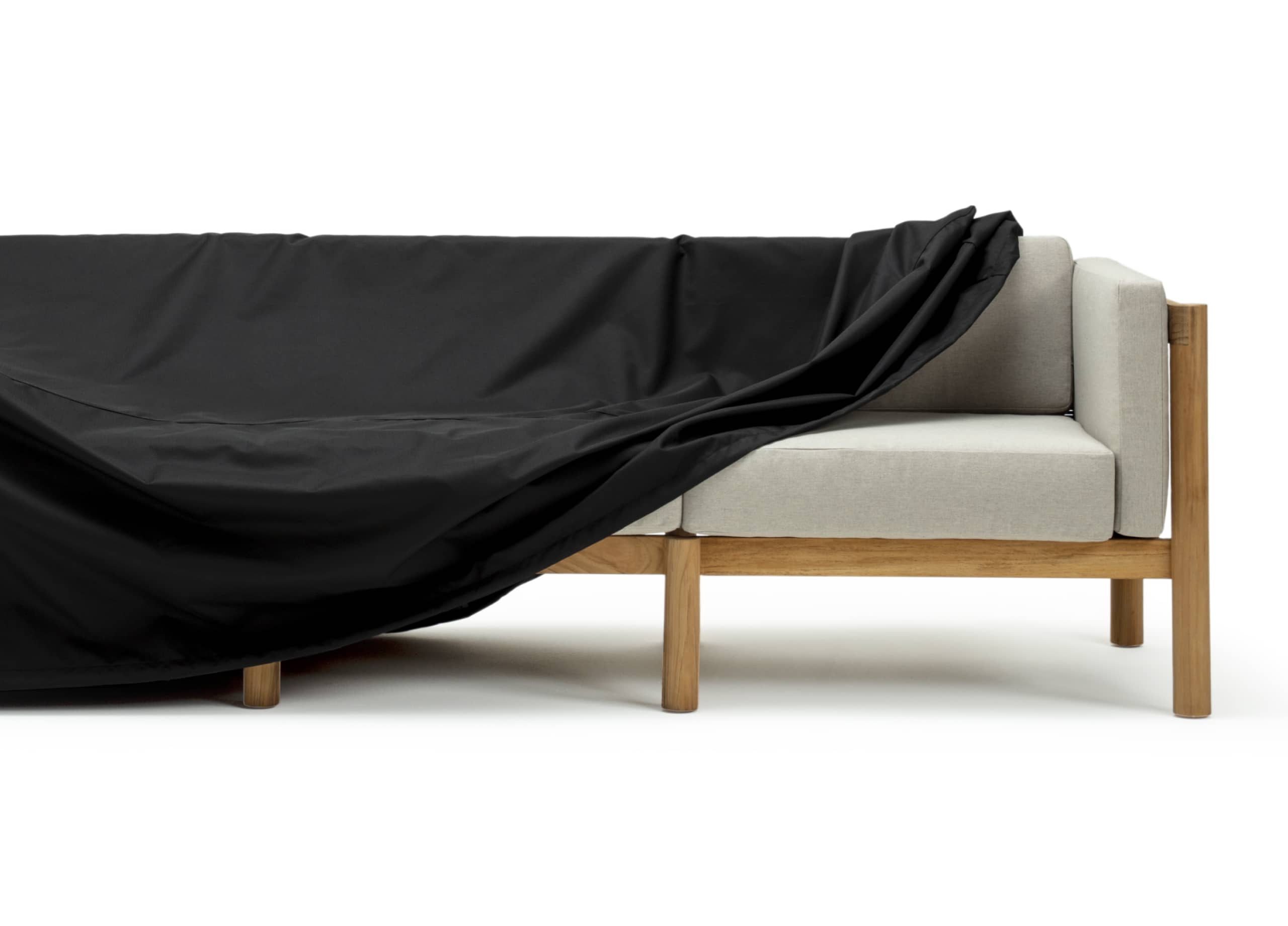
5. Plan for Storage and Seasonality
Since outdoor furniture is exposed to the elements, planning for its protection and storage is important for its longevity (especially if you live in an area with harsh winters or extreme weather conditions). Look for furniture designs that offer practical solutions. Stackable chairs (like the XY Dining Chair) and modular pieces can simplify storage if you plan to keep your furniture in a garage, shed, or other space during the off-season.
Investing in high-quality, weatherproof furniture covers is essential if your furniture remains outdoors year-round, even for durable pieces. These covers offer protection against harsh weather, UV rays, and debris during the off-season. It's also smart to use them during the main season when your furniture is not actively in use. They shield against daily sun exposure, rain, pollen, and dirt, keeping your furniture cleaner and better preserved, extending its life and maintaining its appearance for many seasons.
When selecting covers, opt for waterproof quality ones that fit your furniture securely and have covered vents to prevent mold and mildew. At Neighbor, we custom-make outdoor furniture covers for each piece to provide robust and long-term protection.

6. Invest in Quality Materials
Another important consideration when choosing outdoor furniture is the materials, as these impact durability, maintenance, and lifespan. While premium materials may have a higher initial cost, their long-term value often outweighs the upfront expense by reducing the need for replacements or extensive repairs.
Consider these common materials:
- Aluminum: Lightweight, rust-resistant, and low maintenance. Neighbor's Terra Collection uses easy-to-maintain aluminum.
- Teak: A naturally oily hardwood highly resistant to rot, pests, and weathering. Neighbor uses FSC-certified teak in our Bluff, Dweller, Felloe, Haven, Low, and Reel collections.
- Powder-Coated Steel: Offers strength and stability with a durable, chip-resistant, rust-protective finish. Find it in Neighbor's Trase and XY collections.
- Synthetic Wicker: Made from HDPE, it mimics natural wicker but offers superior resistance to UV rays, moisture, and mildew. Neighbor's Roundabout Collection features premium-grade all-weather synthetic wicker.
- Traditional Wicker: Natural fibers like bamboo are best for covered areas due to susceptibility to sun, rain, and humidity. These require more maintenance and storage.
- Recycled Plastic: Quality recycled plastic, like Polywood used in Neighbor's Low Collection, is an extremely durable choice. Polywood is made from recycled HDPE plastic engineered to withstand extreme weather without fading, cracking, or rotting. It's low maintenance and never needs painting.
- Concrete: Robust and weather-resistant, offering a contemporary, industrial look, often used for tabletops and bases. Neighbor uses concrete for our fire pit tables.
- Fabric: For cushions, high-performance fabrics combined with quick-drying foam are key. Sunbrella®, used by Neighbor, is a leading choice for its solution-dyed acrylic fibers that resist fading, mold, and mildew, offering lasting comfort and vibrant color.

7. Match With Accessories and Style
Once your main furniture is chosen, accessories are what truly bring your outdoor space to life, adding personality, comfort, and visual cohesion. These finishing touches allow you to infuse your personal style and transform a functional area into a warm, inviting space.
Start with textiles.
Cushions, pillows, and throw blankets offer an immediate opportunity to introduce pops of color, unique patterns, and soft textures. Opt for outdoor-specific fabrics, like Sunbrella®, that are UV-resistant to prevent fading, water-repellent for quick drying, and easy to clean, ensuring they look great through various weather conditions.
Layer in an outdoor rug.
Outdoor rugs help define distinct zones (i.e., dining areas vs. lounge areas), add comfort, and introduce an additional layer of texture and color. Choose rugs made from durable, weather-resistant materials specifically designed for outdoor use. The outdoor rugs offered by Neighbor are capable of withstanding sun and rain without deteriorating.
Add shade with purpose.
If your outdoor space is uncovered, umbrellas are an essential element for both comfort and design. Beyond providing crucial sun protection and creating a cool, shaded area, they can also serve as a striking focal point and bring color to your area. Consider options with tilt and crank mechanisms for ease of use, and select colors or patterns that complement your furniture and overall aesthetic.
Extend patio time with thoughtful lighting.
Lighting helps transform your outdoor space after dusk. Beyond pure functionality, outdoor lighting sets the mood, making your patio inviting and magical. String lights draped overhead create a festive ambiance, while lanterns placed strategically offer softer glows. Pathway lights enhance safety and guide movement, and even subtle accent lighting can highlight architectural features or beautiful plantings.
Incorporate greenery.
Finally, planters and greenery are vital for integrating your outdoor living area with the natural environment. Incorporating plants of varying sizes and types adds natural beauty, softens the lines of furniture, and brings a sense of vibrancy. Choose planters that complement your furniture's style and material—whether it's sleek metal for a modern look or rustic terracotta for a more traditional feel.
Keep it cohesive.
When selecting all these accessories, always keep your overall aesthetic in mind. Do you prefer a modern, minimalist look, a bohemian retreat, or a classic, timeless feel? Ensure the colors, textures, and patterns of your accessories work in harmony with your furniture and the surrounding landscape. This thoughtful coordination creates a cohesive and inviting outdoor sanctuary where you'll love to spend time.

How to Identify Durable, High-Quality Patio Furniture
Investing in quality patio furniture is not just about aesthetics; it's a practical decision that significantly impacts long-term value and enjoyment. While cheaper alternatives might seem initially appealing, they often lack the build quality and material integrity to withstand the rigors of outdoor environments. Well-made pieces will resist corrosion, warping, fading, and general wear and tear for many years, if not decades. This means you avoid the recurring expense and hassle of replacing worn-out furniture every few seasons.
To find quality pieces, look beyond the surface.
- Metal frames should have solid welds and robust connections rather than flimsy bolted joints.
- Powder-coated finishes should be thick and even, without chips or scratches.
- Wood furniture should have dense grains, smooth finishes, and mortise-and-tenon or dowel joints rather than simple screws.
- Cushions should be made with high-density foam that retains its shape, covered in solution-dyed acrylic fabrics (like Sunbrella®) that resist fading and mildew.

Patio Furniture Options From Neighbor
At Neighbor, we believe your outdoor space should be as comfortable and thoughtfully designed as your indoor one. From our flagship, modular Haven Collection—built for ultimate flexibility and deep comfort—to our airy and stackable XY Collection, we prioritize thoughtful design that delivers comfort, resilience, and a timeless appeal. Explore our collections and discover how Neighbor can enhance your outdoor living experience.

